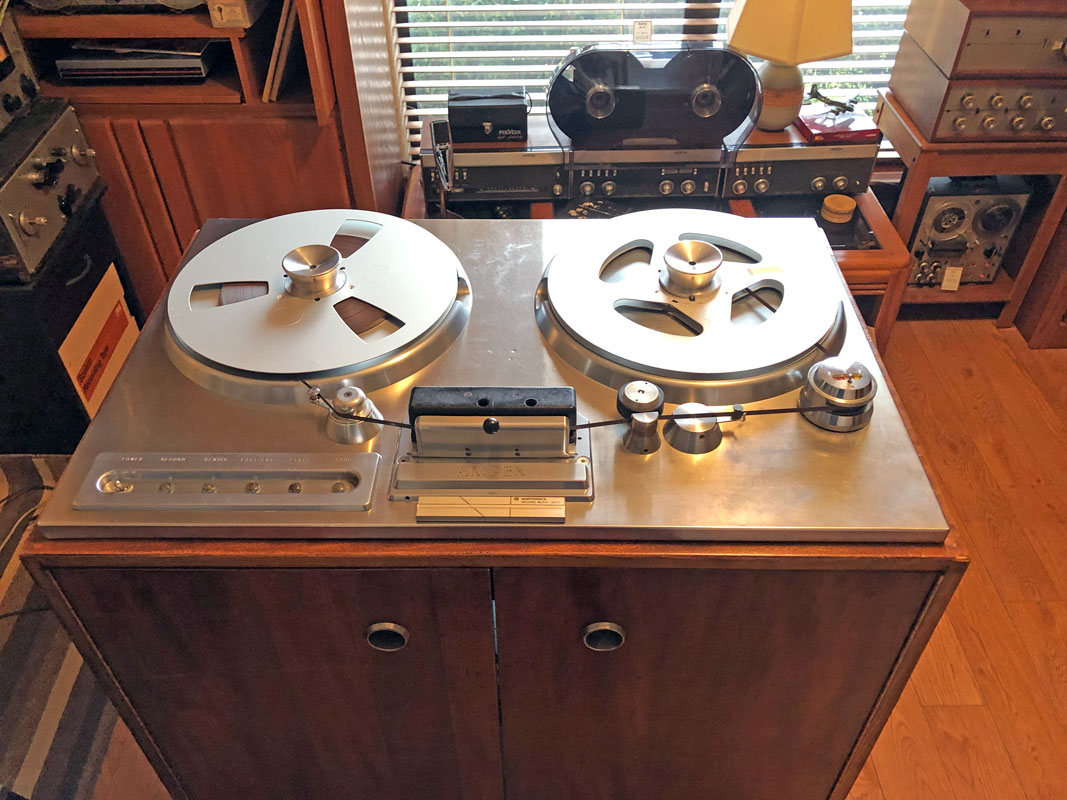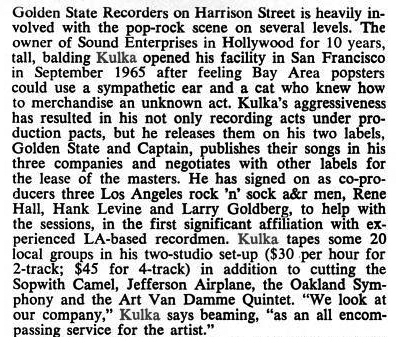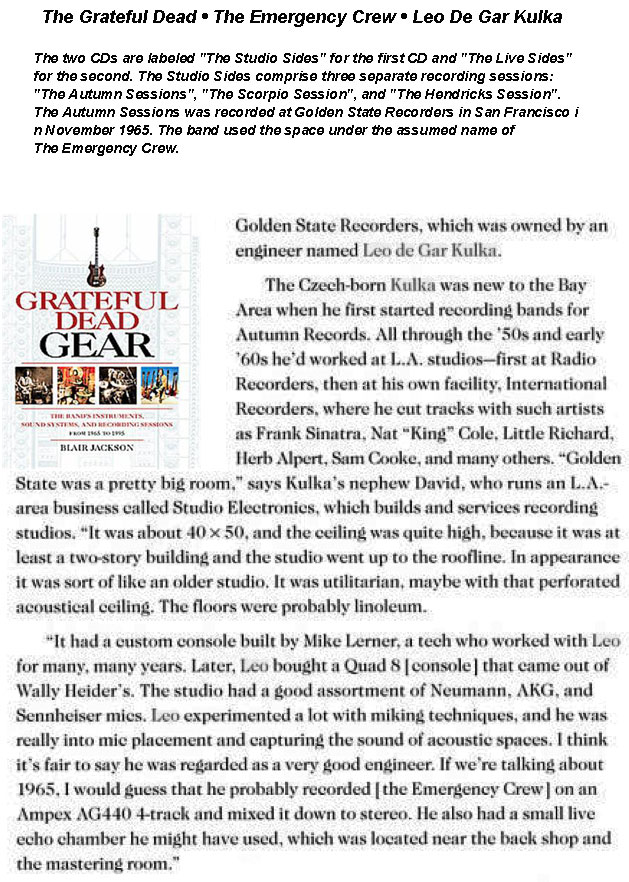This page provides information regarding our Ampex 200-A #33 and 300 reel tape recorders acquired in 2010 • © Theophilus Collection
A reminder that the prices listed are what the item originally sold for in the year it was released.
After a two year gig on the third floor of the Bob Bullock Texas State History Museum in Austin Texas our Ampex 200A #33 is back home. View brief video
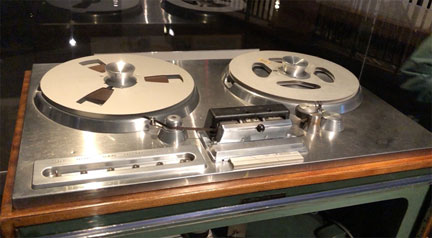  
 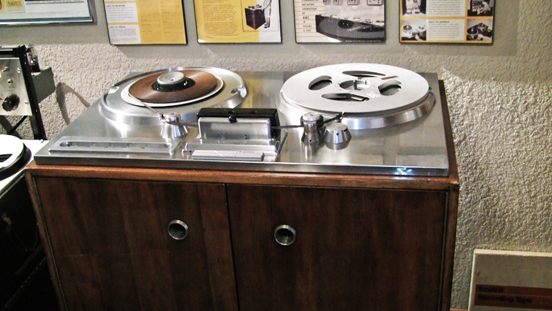 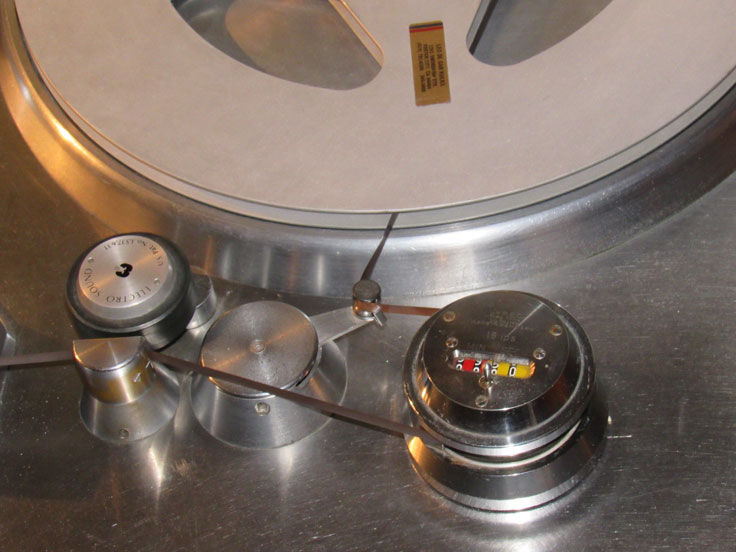 
Ampex 200-A Serial #33
Our 1948 Ampex 200-A #33 was originally bought from Bing Crosby Enterprises, Inc. by Capitol Records in Los Angeles, California. The news clips below detail some information regarding ABC and Capitol Records decisions to acquire the new technology. We also have Capitol Records detail regarding the Ampex 200-A, #33's upgrade in 1949. This upgrade to the Ampex 201 specs involved the replacing of the original head cover and installing an Ampex 300 head cover and tape lifters. View the Capitol Records documents here. They also updated this Ampex 200-A in 1954 and 1955. After the update, the Ampex 200A was designated as the Ampex 201.
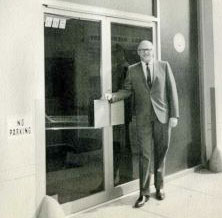 Our Ampex 200-A was subsequently acquired by Leo De Gar Kulka, Golden State Recorders in San Francisco. Leo was known in the record and recording industry as "the Baron" and remembered for his recording of Frank Sinatra, Nat King Cole, among others. We were told that "the Baron" was always striving to keep up with the latest technology and greatly valued this Ampex 200A reel tape recorder. Our Ampex 200-A was subsequently acquired by Leo De Gar Kulka, Golden State Recorders in San Francisco. Leo was known in the record and recording industry as "the Baron" and remembered for his recording of Frank Sinatra, Nat King Cole, among others. We were told that "the Baron" was always striving to keep up with the latest technology and greatly valued this Ampex 200A reel tape recorder.
"To the end, Leo waxed ecstatic over his Ampex model 200 (the first tape recorder produced in this country, some 40 years old). And he may have been the last living audio engineer to edit tape without a splicing block or a razor blade. He would lay a section of tape across his left hand precisely lining it up with his thumb and finger, and using a small scissor he made fast splices that always joined perfectly." Audio Engineering Society
This Ampex 200-A #33 we acquired was upgraded to stereo using Inovonics amps. Floyd Domino and Ray Benson with Asleep At The Wheel also shared with us that the band demoed early songs at Golden State Recorders which were recorded on this Ampex 200A. At that time, Ray said the recorder had been converted to a four track machine. You can see the two Inovonics amps and the open screw holes below them where the other two Inovonics amps were installed. We initially were going to restore the recorder to its original state. However after learning more about the history of the unit, we have decided to work to acquire the original electronics, but will leave the unit as is for now. The electronics seen in the cabinet presently belonged to the "clone" we acquired in 2015. They also need restoration.
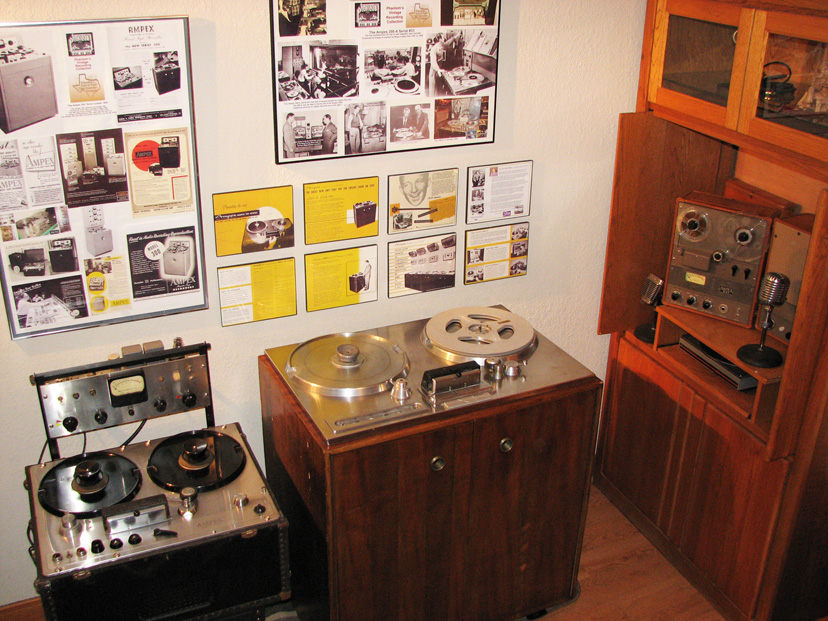 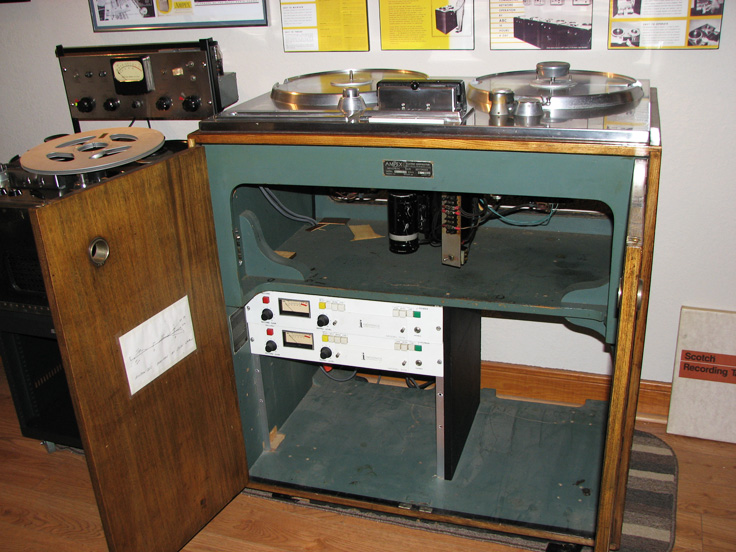 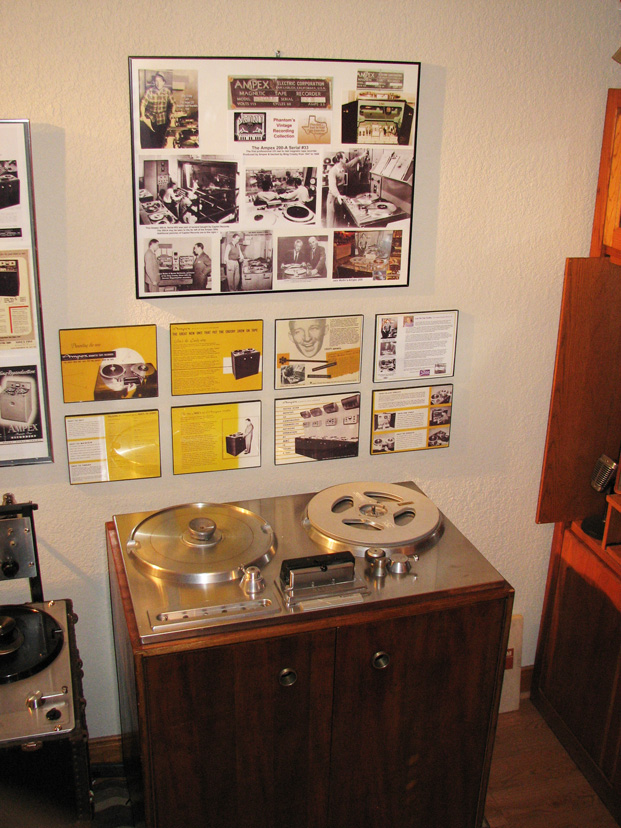 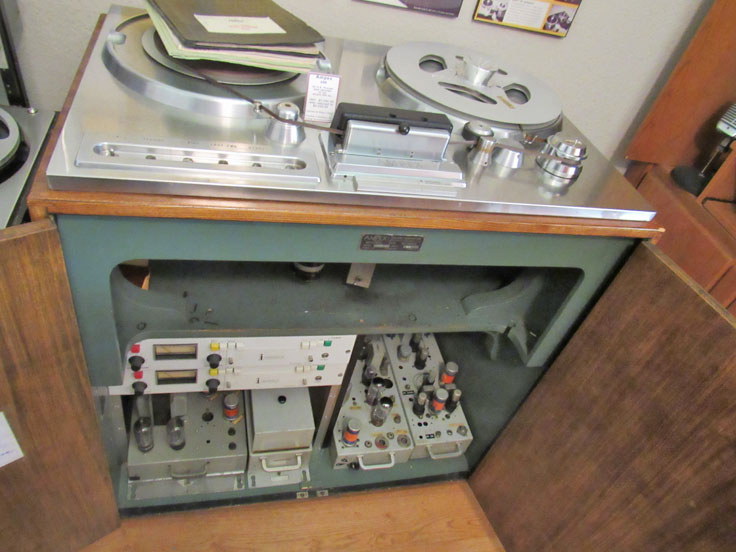
The Ampex 200-A cost Ampex approximately $76,000 to develop (according to some sources). It was over engineered, however that resulted in their receiving a reputation of a very high quality product. There are numerous anecdotes described in various resources including the recording capability not being ready when the unit was first demoed for the Crosby folks. There are numerous references to the size and weight of the original 200-A (to which we can heartily attest). On the right above is our Ampex 200A reel to reel tape recorder with the electronics ready to be restored. Just need time.
A look inside the Ampex 200A #33
The notice with the name plate states "Licensed under United States Patent Rights of the Ampex Electric Corporation, Patent Pending. Licensed under United States Patents of American Telephone and Telegraph Company and Western Electric Company Incorporated but not for use (A) interlocked with apparatus for the taking or projection of motion pictures, or (B) directly or acoustically connected to a telephone line accessible to the public through a telephone exchange or a toll telephone system. Licensed under United States patents of Armour Research Foundation of the Illinois Institute of Technology."
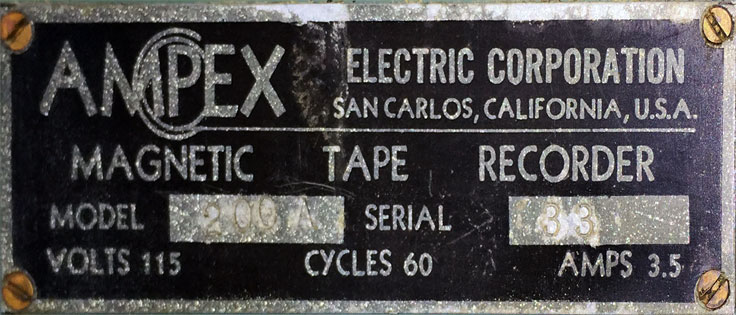 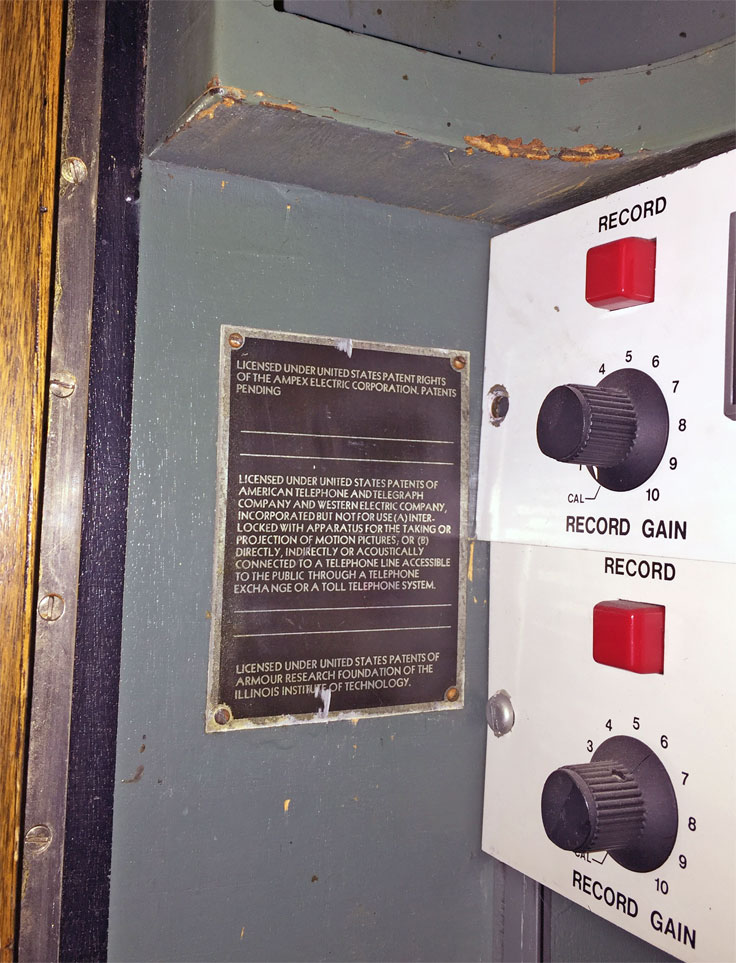 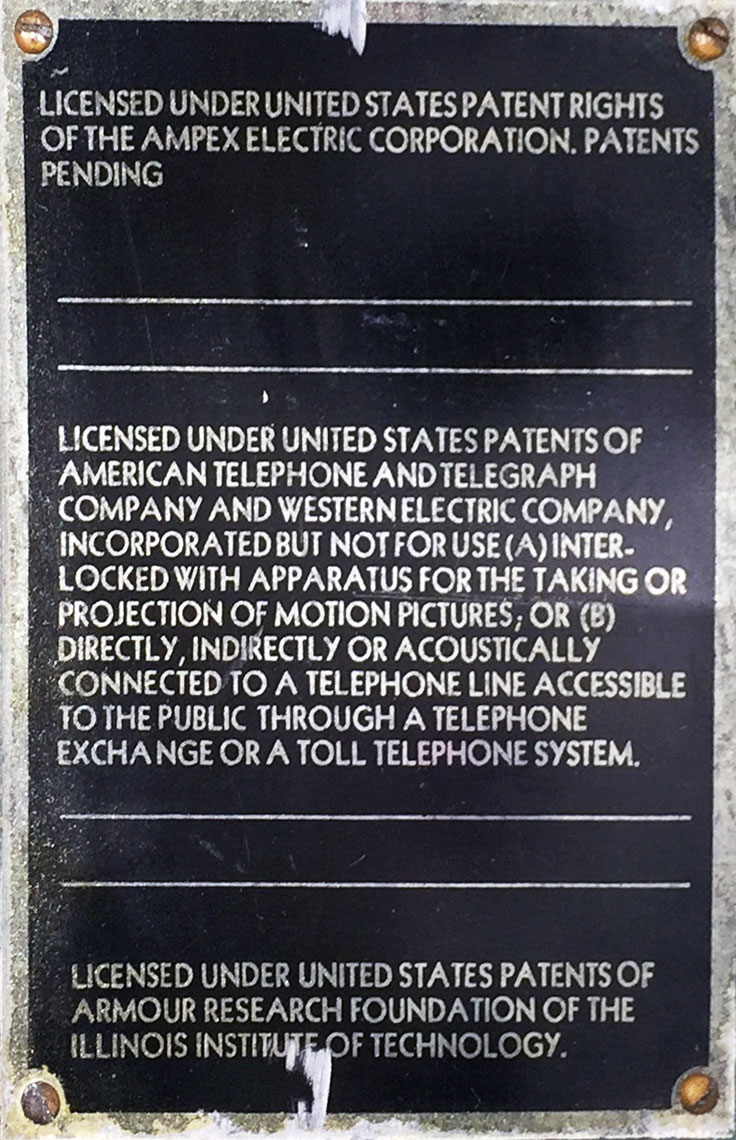
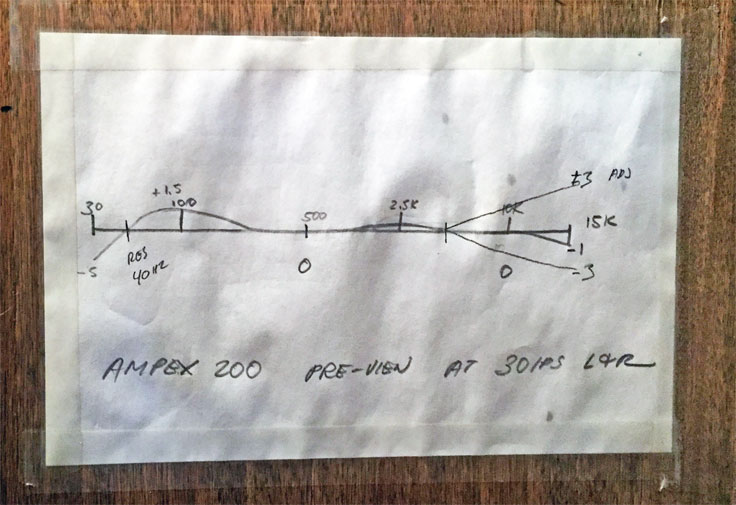 
 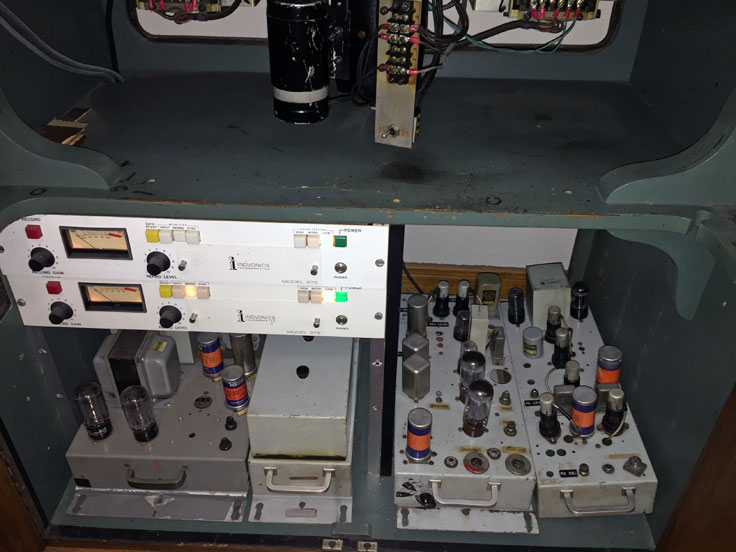 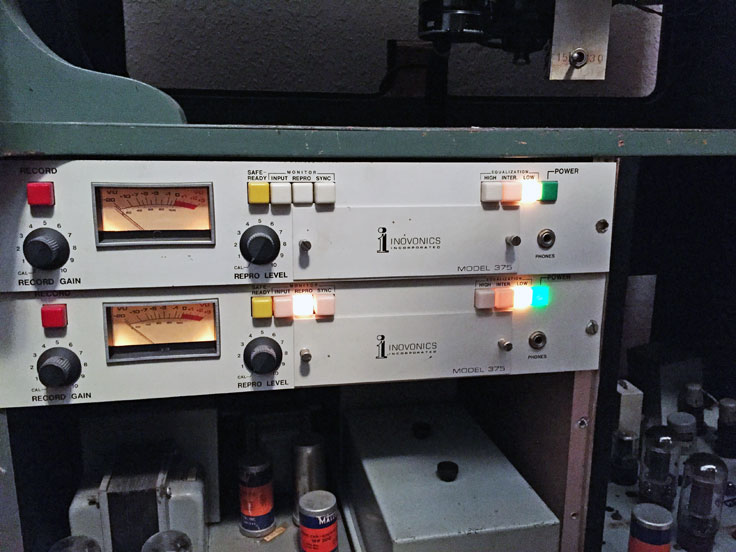
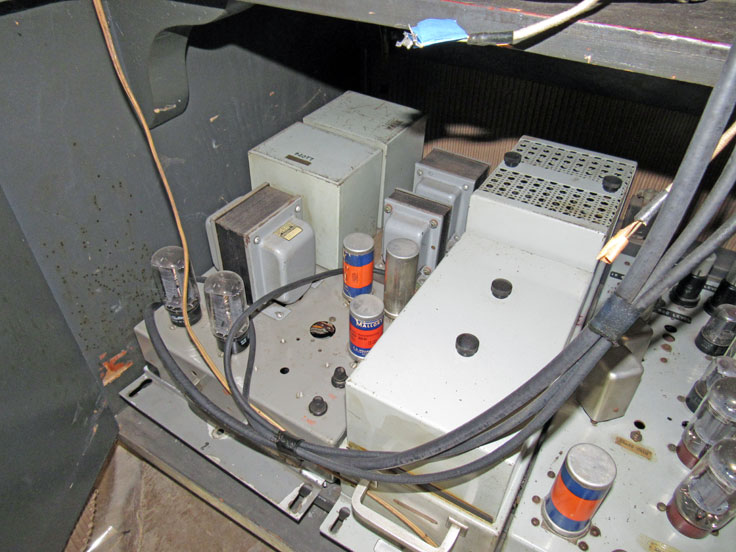 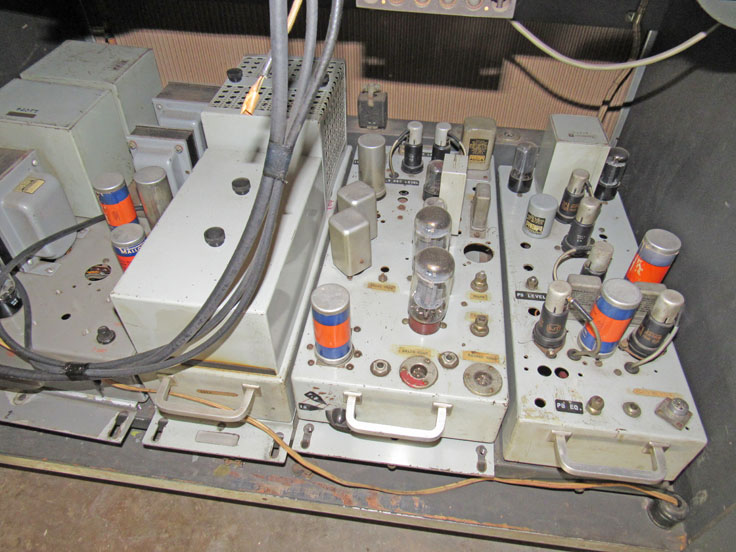
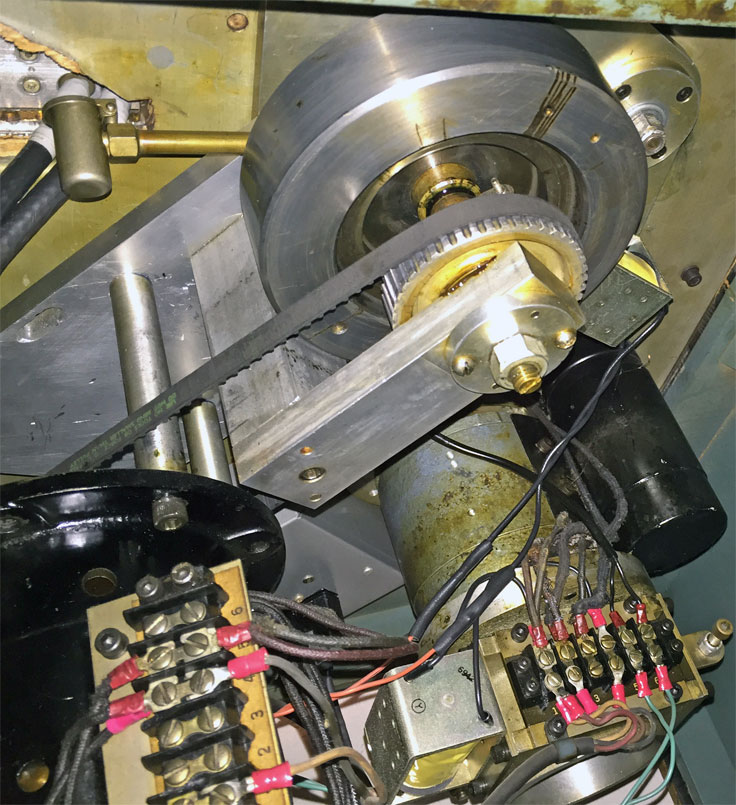 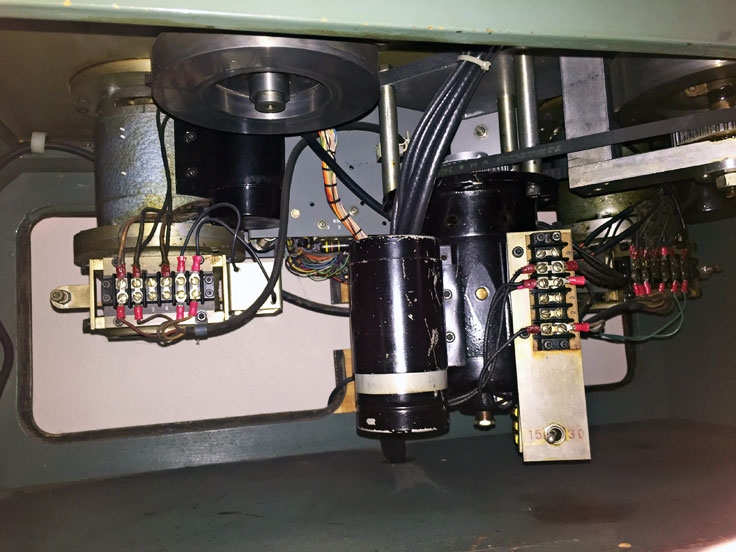 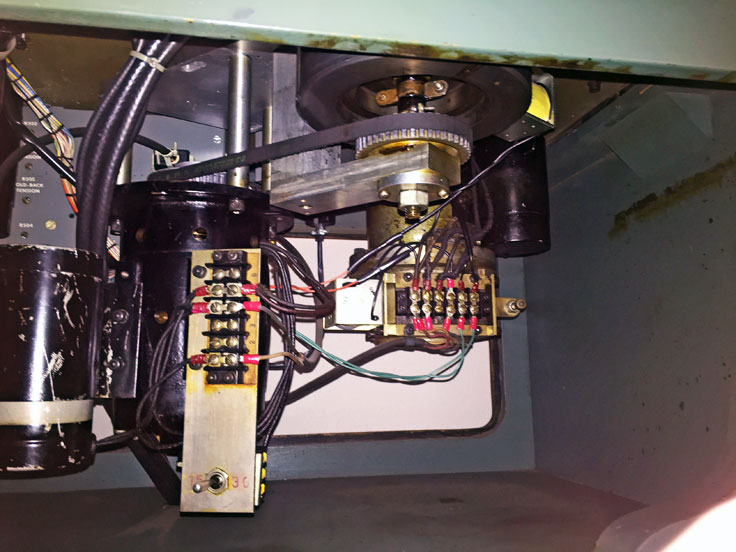
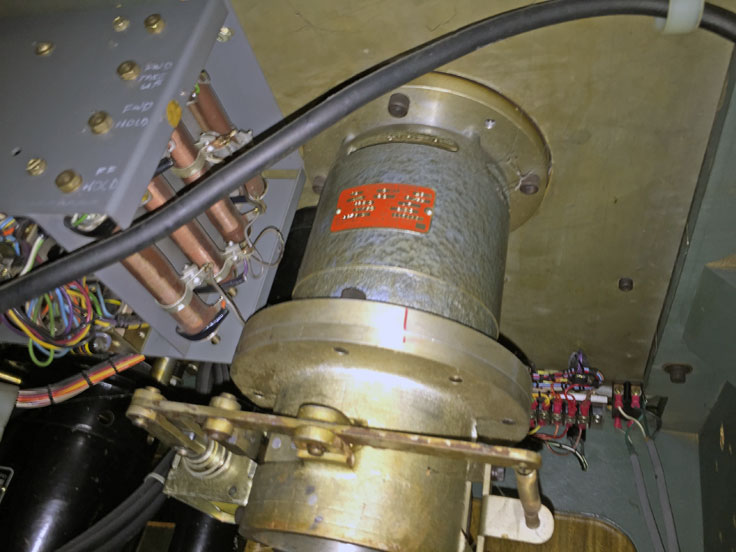 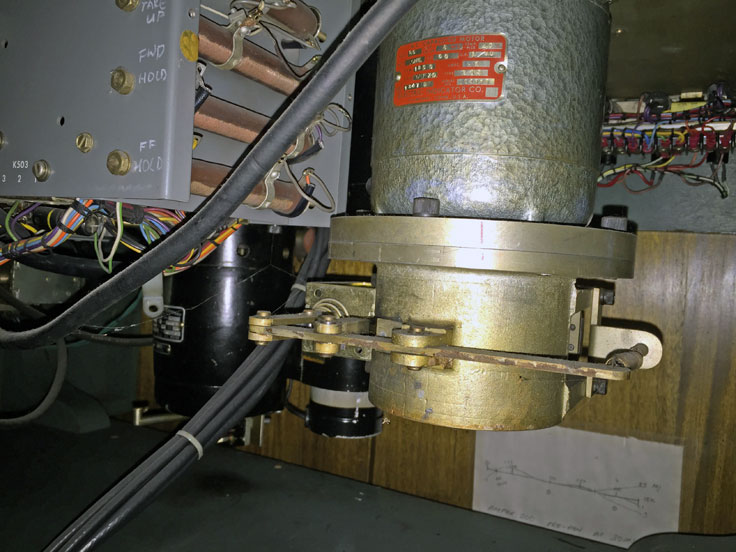 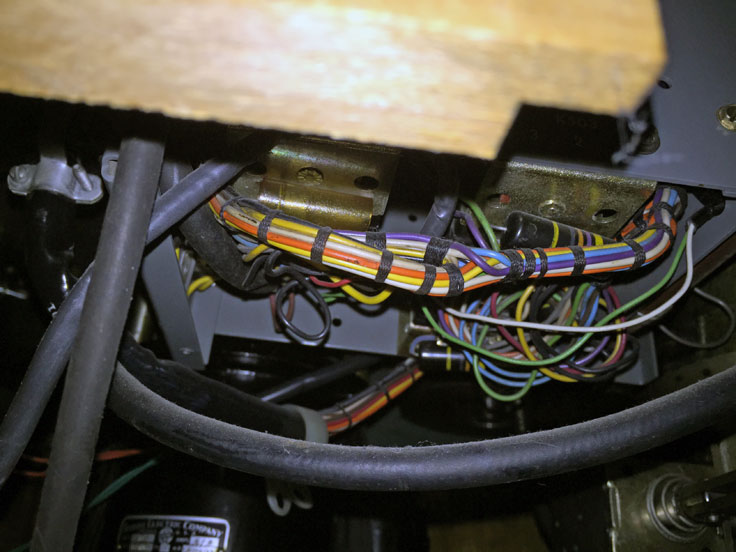
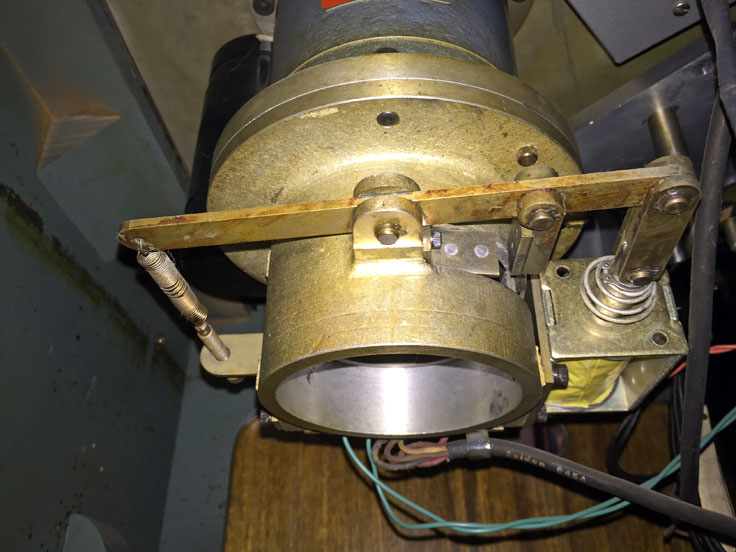 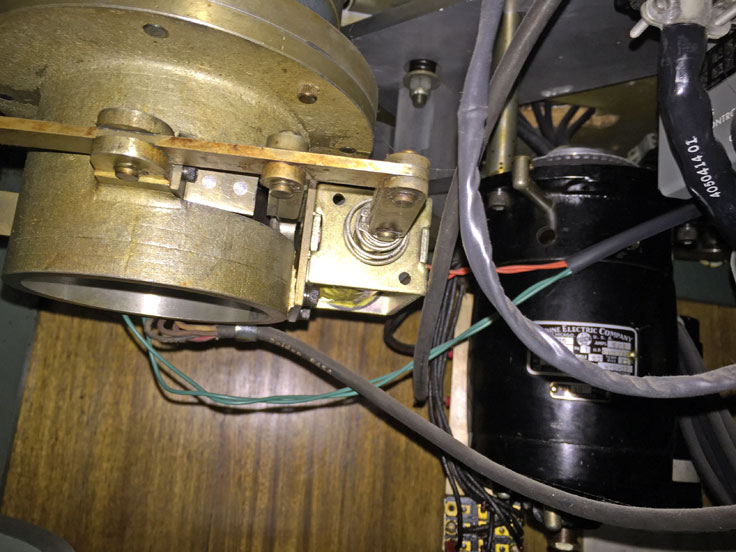 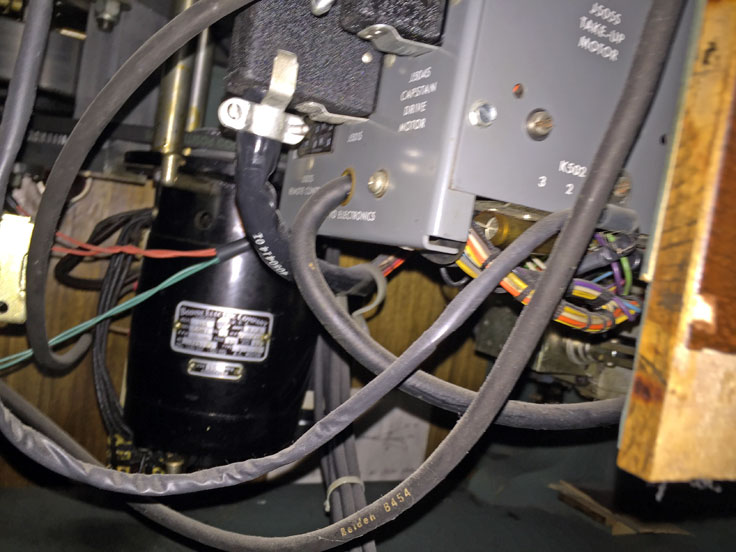
  
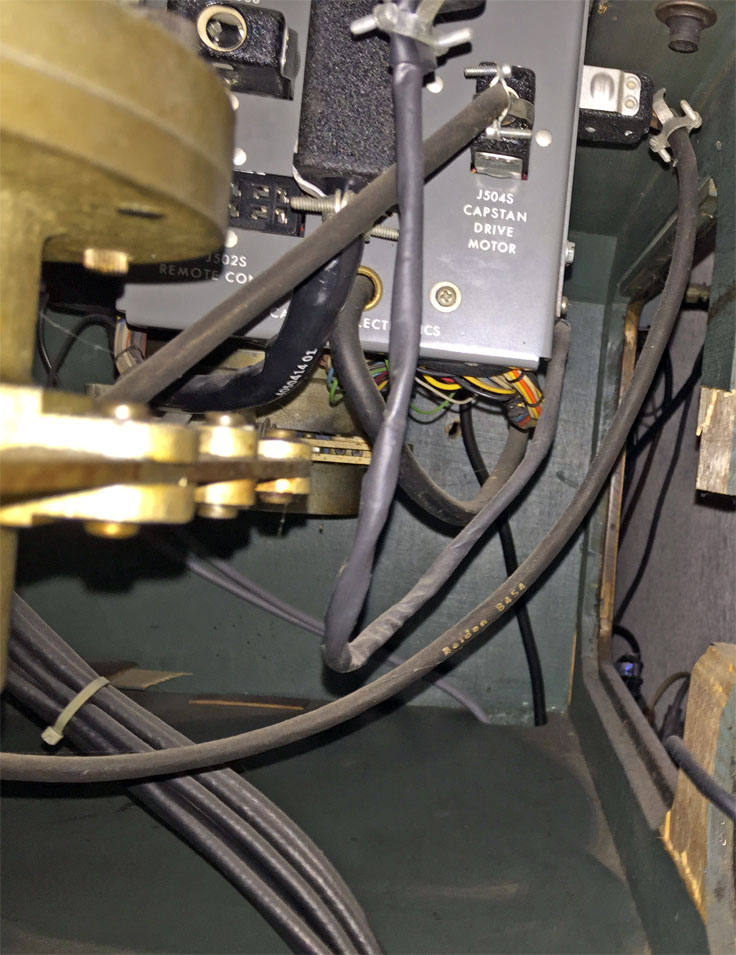 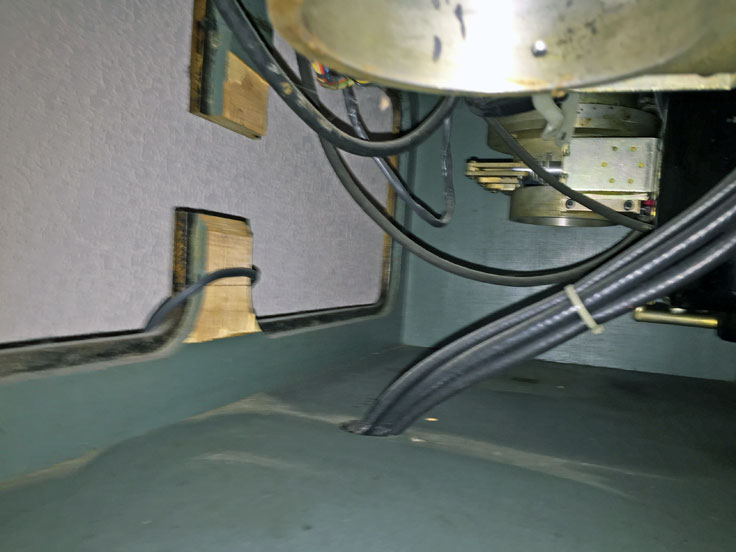 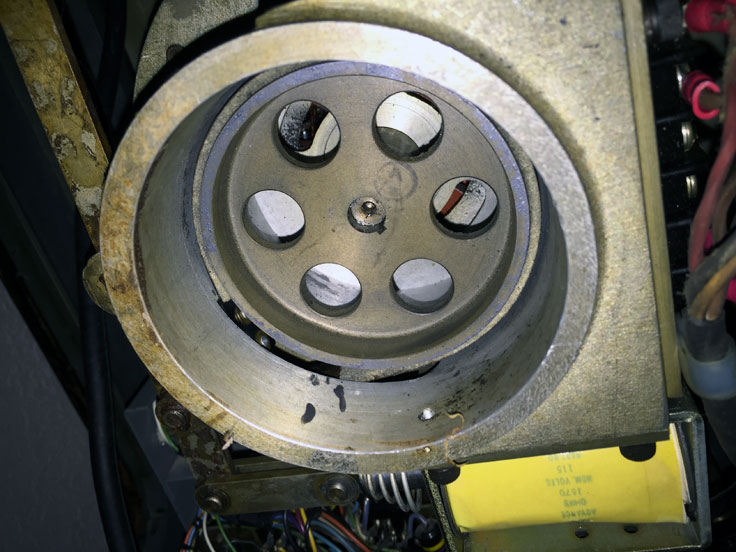
 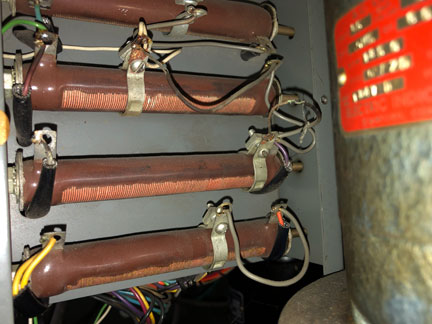 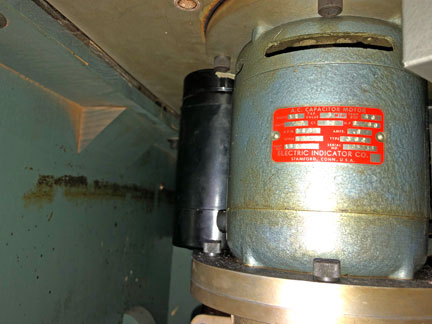
 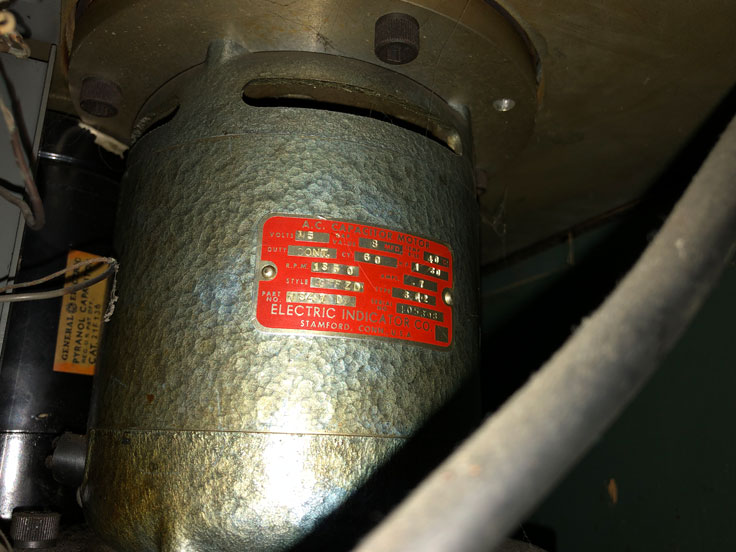 
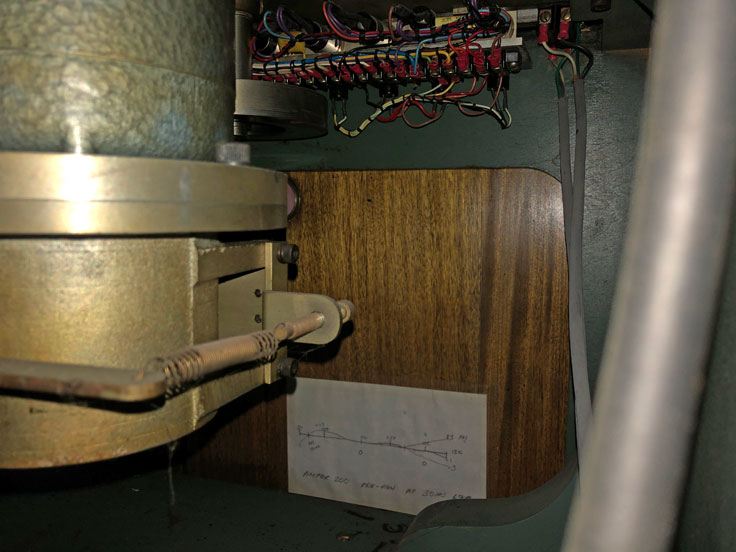 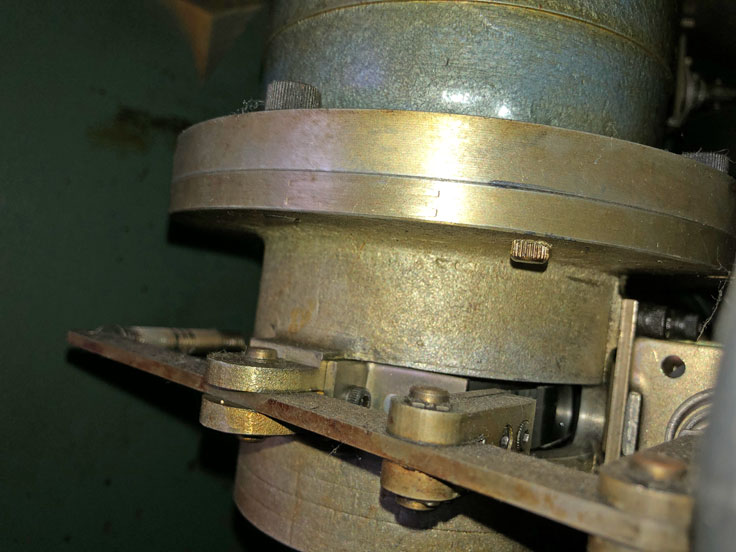 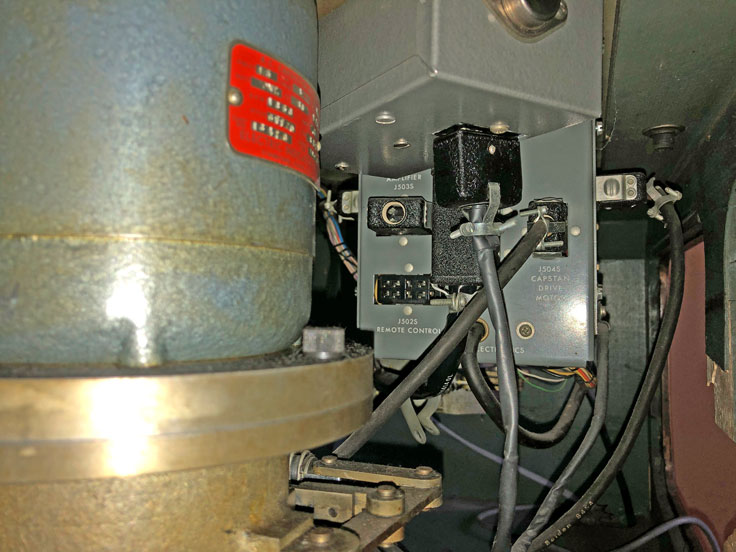

Ampex 200A 1948 professional reel to reel magnetic tape recorder ads
Ampex brochure for the Ampex 200-A
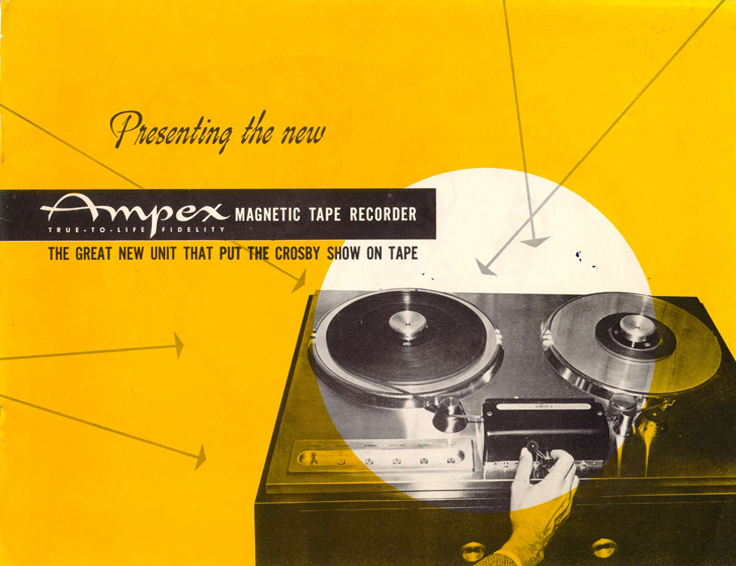 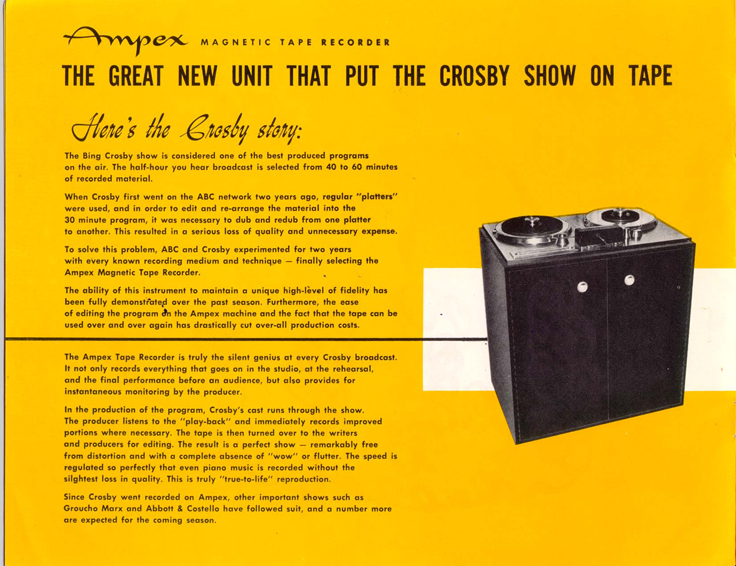 
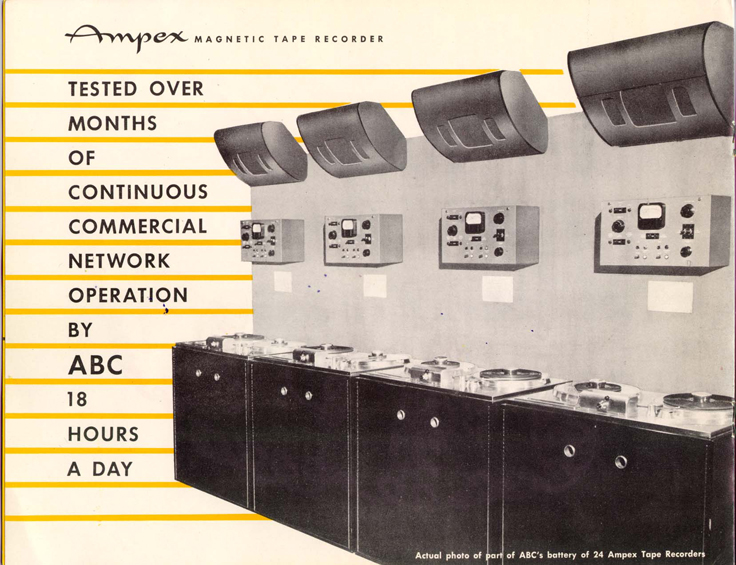 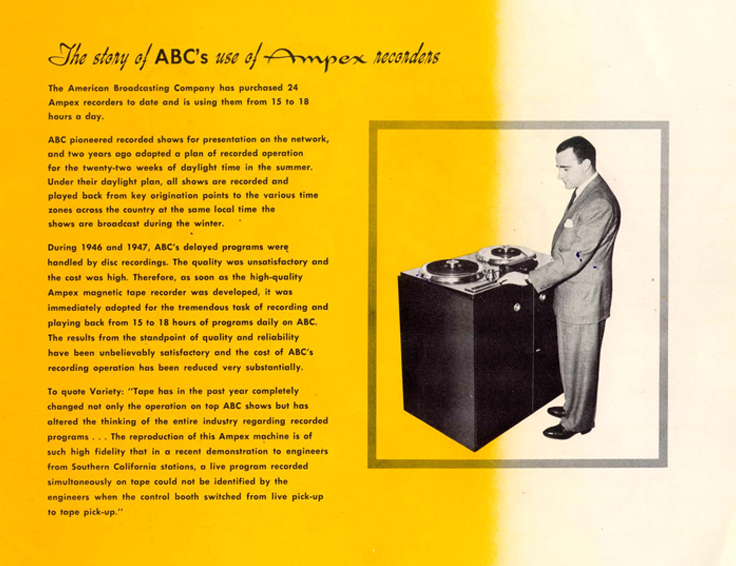 
 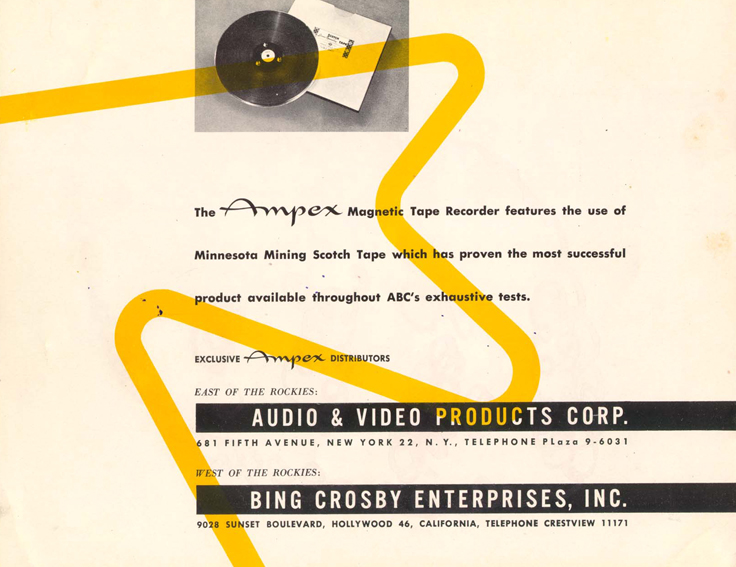
Year |
Model |
Ad |
Unit in Museum collection |
Specifications |
1949 |
Ampex 300 |
|
|
|
| |
The Ampex 300 (number 1840 of 42,000 which were manufactured) was also previously owned by Leo De Gar Kulka. Both units were very well cared for.
I have cleaned the units up, however have not began to get them restored. We acquired a restored original Ampex 300 set of electronics which are in the base of the recorder's cabinet.
pdf of the Ampex 300 transport electronics
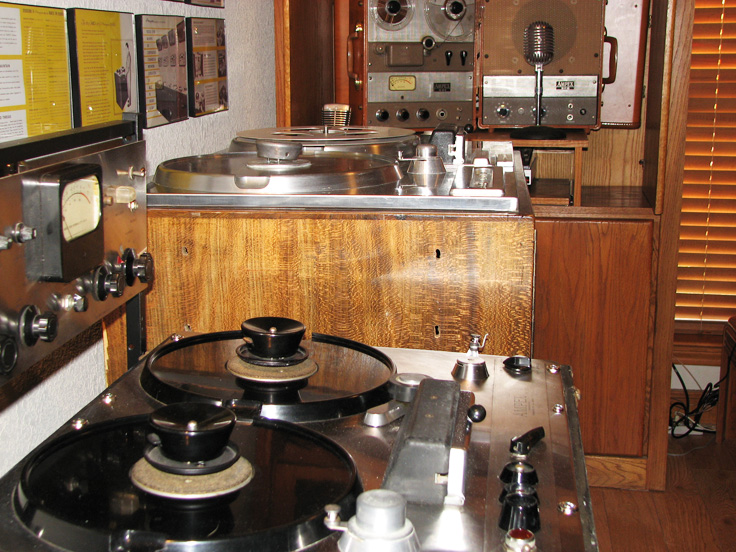 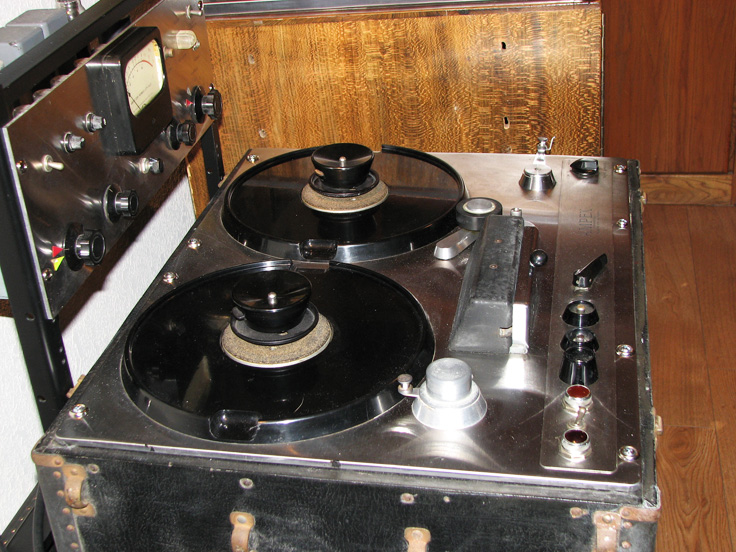  
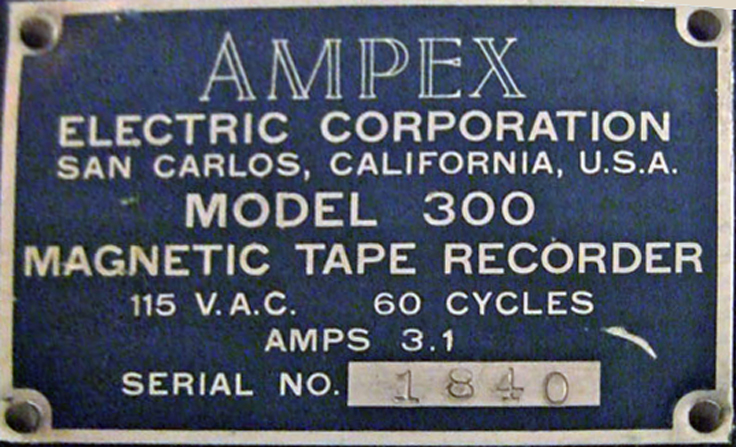 Ampex 300 professional reel to reel tape recorder in the Reel2ReelTexas.com and Museum of Magnetic Sound Recording collection. This unit was acquired at the same time as our Ampex 200A. The two recorders had been together in Leo De Gar Kulka's Golden State studio until his passing in 1998. The units remained in his estate until they were purchased in 2010 and we found out that they were available. Ampex 300 professional reel to reel tape recorder in the Reel2ReelTexas.com and Museum of Magnetic Sound Recording collection. This unit was acquired at the same time as our Ampex 200A. The two recorders had been together in Leo De Gar Kulka's Golden State studio until his passing in 1998. The units remained in his estate until they were purchased in 2010 and we found out that they were available.
Ampex decided they needed to release a less expensive more compact recorder. The Ampex 300 professional reel to reel tape recorder was developed. The first production Ampex Model 300 was shipped in late spring, 1949. A 15/30 ips version, the Ampex Model 301, was introduced shortly after that. The 300 transport became the platform for many versions of both audio and instrumentation recorders. Overall about 20,000 of these transports were produced (another source states there were 42,000 Ampex 300s built).
Phantom Productions, Inc's Ampex 300 is serial number 1840 and belonged to Leo de Gar Kulka of Golden State recorders, Inc. in the San Francisco Bay area. Ampex 200A Manual
We appreciate Uriel's information below on the electronic with our Ampex 300.
Hello,
I looked at your very nice collection of older Ampex recorders. It's interesting, in your presentation of the Ampex model 300, both in your display and in your Ampex timeline, you do not mention that the 300 in your collection is attached to a 402/403 electronics. This is of course, not an original concept. I wonder who did that.. The original 300 had the "bathtub" electronics that was a 6SN7 push pull design as output stage as opposed to the 6C5/6J5 single ended of the 403 you show.
Personally, I believe that the 403 electronics is the best sounding tube electronics that Ampex produced ( but not having heard the 200A electronics, or its later modification) and because of that I'm actually running at home a stereo 350 transport feeding two 403 amplifier units. The best of all worlds I believe, of a great transport with the best sounding electronics INHO. Never really liked the 350 electronics sound and a bit better the triode 351 .
Anyway, Just for the sake of the "science of history" you might want to mention that your display of the 300 model is a mutation (like my 350 ).
great work Thanks, Uriel Tsachor
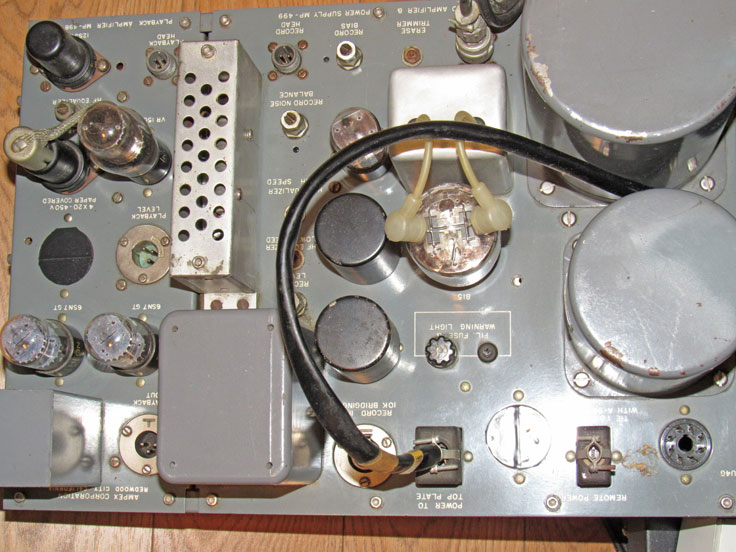 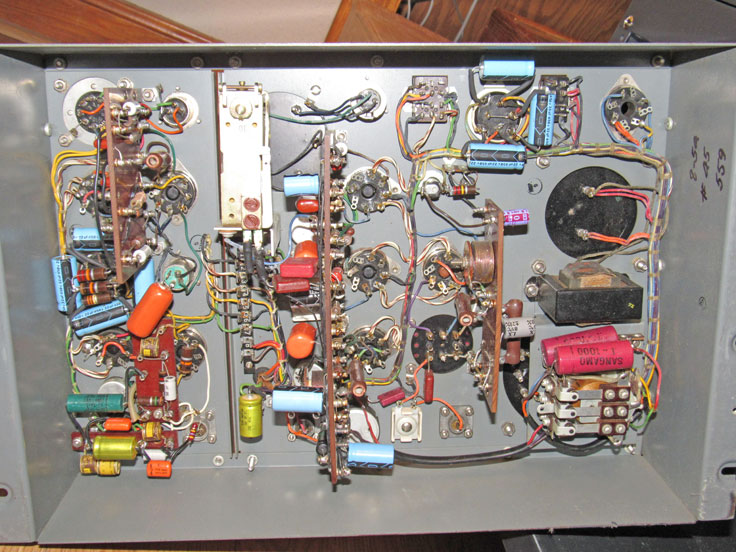
We have now acquired an original restored amplifier for the Ampex 300 professional reel to reel tape recorder in the Reel2ReelTexas.com vintage reel tape recorder recording collection
More comments on Ampex 200A and 300
I commend your work. A fabulous and informative collection. A few notes: At 2:15, the machine is an Ampex AG350, not an AG300. At 2:30 the portable Ampex 400 was model 400A. At 16:15, the upgrade Ampex offered replacing the original 200A electronics with the 300 electronics, also converted the machine from emulsion out wind to emulsion in wind, by replacing the original head assembly with a 300 type, and the machine was also modified to run at both 15 ips as well as the original 30 ips. The entire upgrade converted the machine to what Ampex designated as the model 201. At 17:20, the electronics on the Ampex 300 transport are from an Ampex 400 console machine, models 402 and 403. At 19:25 Mitsubishi digital format was Pro-Digi, not Pro Logic. Pro Logic was a Dolby surround film sound process. I hope you have succeeded in locating the interconnect cables.
Response "Thank you for the corrections. The missed AG350 was what happens when you try to video on the fly. So our 400A has the left hand drive, however this particular unit did not have the push buttons seen on other 400s. Still haven't had time to try and get it operating. I debated about installing the 300 electronics in the 300 and replacing the 400 (which is how it came when we bought it from the Leo de Gar Kulka estate with the 200A), or leaving it with the 200A. The refurbished 300 amp was bought later. On our Ampex web site page, you'll see we've also obtained the skeleton of the original 200A electronics, or it's a "home brew" of the electronics. https://museumofmagneticsoundrecording.org/RecordersAmpex200A.html And sadly the X-80 is gone (never found cables). . Due to a lack of interest and donations, the non-profit permanent museum facility could not be created and was dissolved in December 2017. We wish there had been a better outcome. The private collection will go from over 200+ tape recorders to about 75 of the most historically important. We are working to insure the web site remains as long as possible. Thank you again for taking the time to write. Cheers! Martin
Ampex 201 clone - the "White Machine" NLIC
We've learned that the unit (below) acquired in 2015 and represented to the Museum as an Ampex 201, may actually be a "knock-off" known as the "White" machines. We are looking to learn more about it. If anyone can add to the history of this unit, it is appreciated. pdf of the Ampex 201 "clone"electronics
 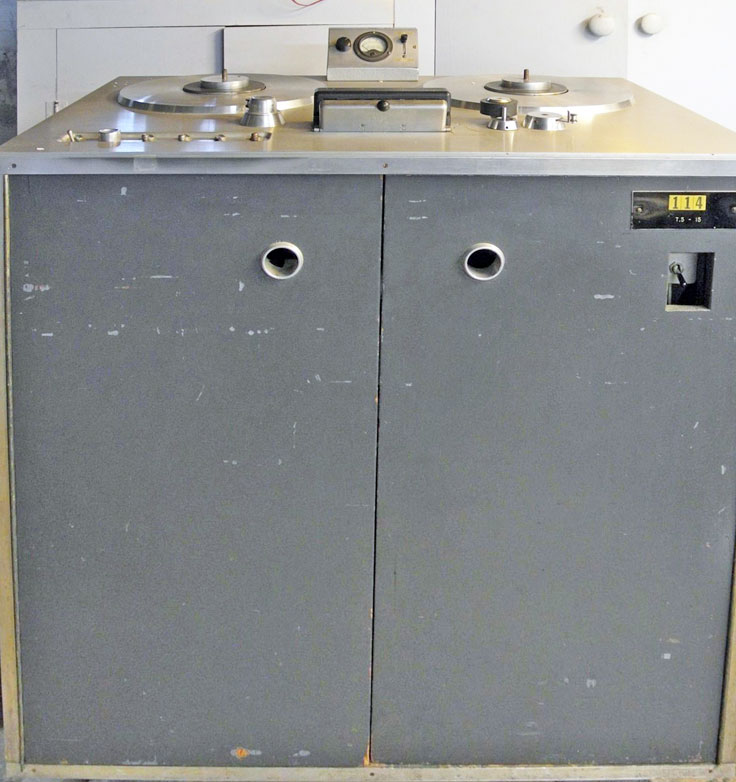 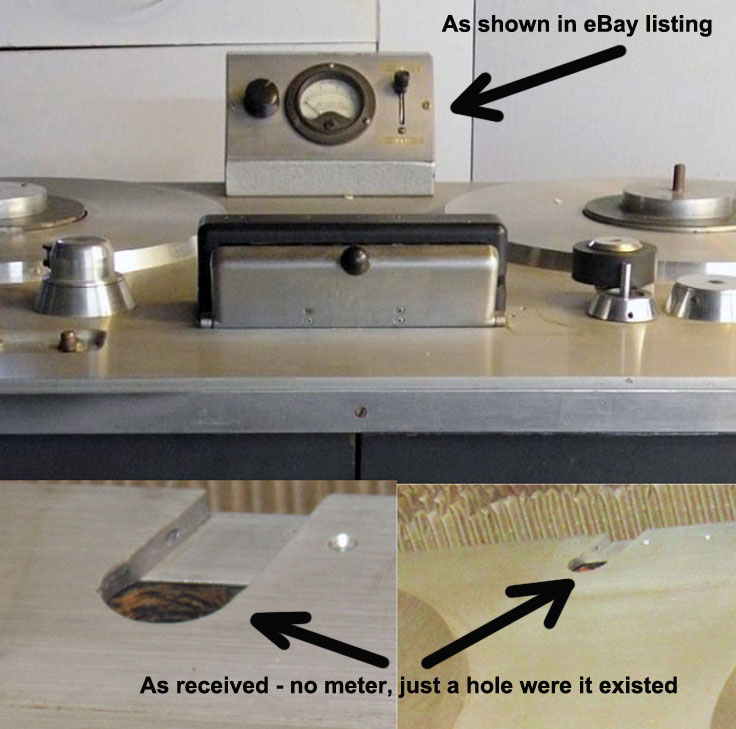 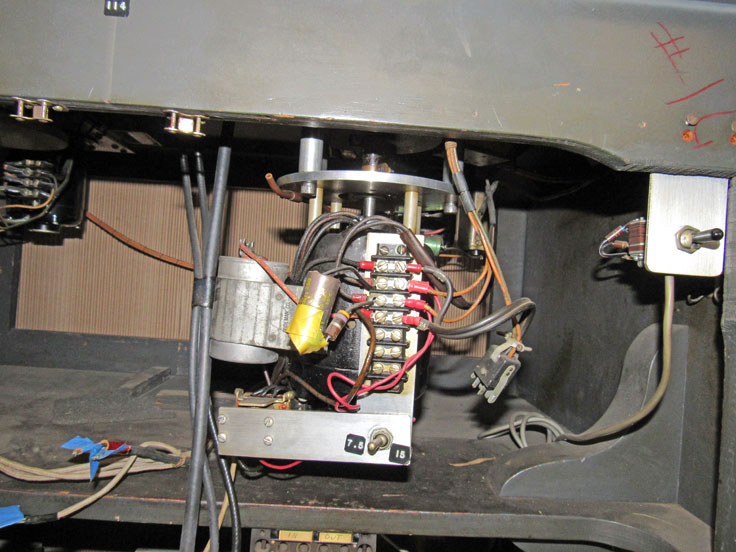 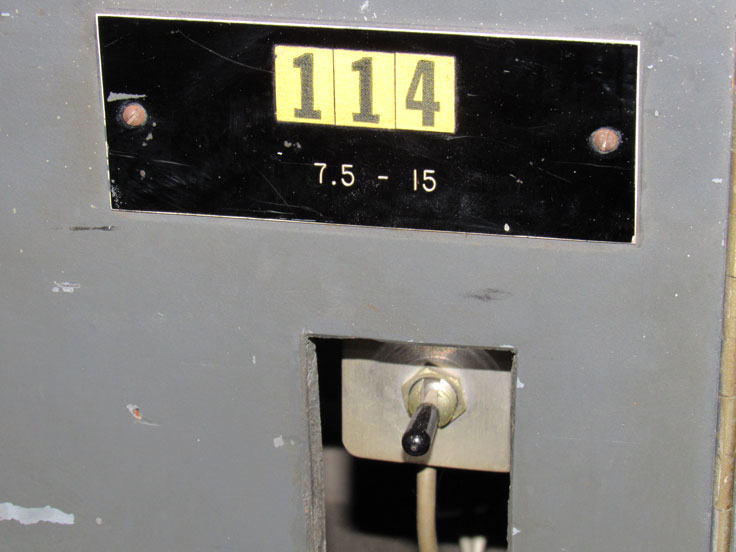 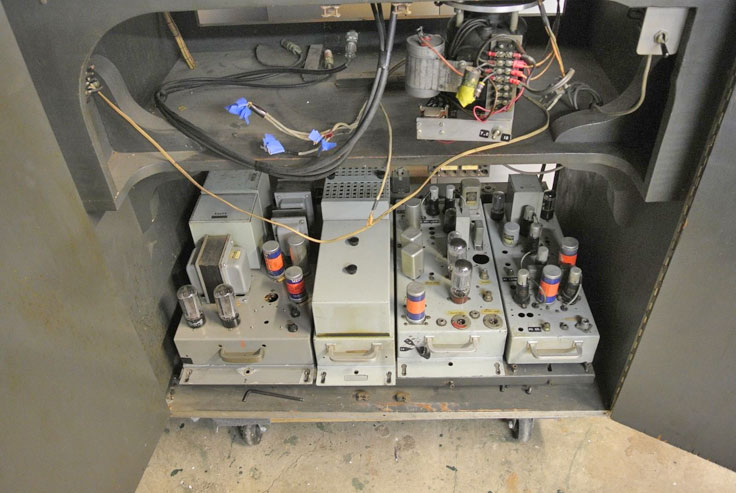
The interesting meter on top of this unit, while showing to be part of this acquisition, was never supplied by the seller.
More on the Ampex 200A
We have researched numerous magazine publications, books, AES interviews and held discussions and correspondence with folks who worked on the equipment during the period to provide the following information. There are some source differences and I have tried to represent the essence of the process as the original Ampex equipment evolved. I will update the information as I obtain new details.
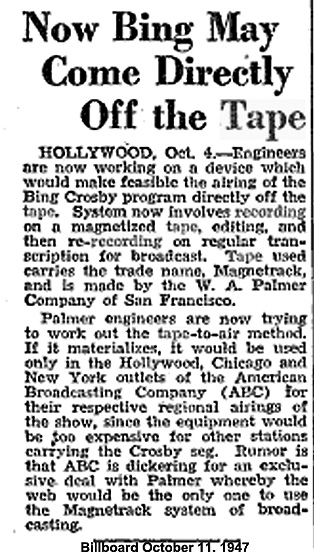 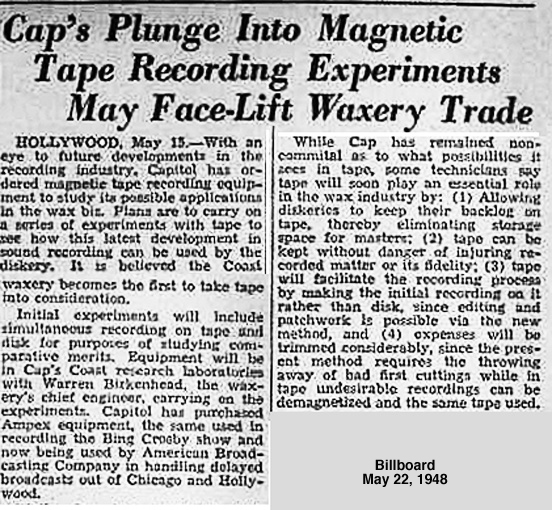 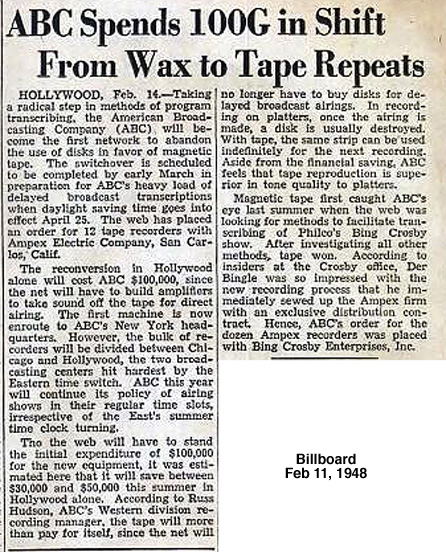 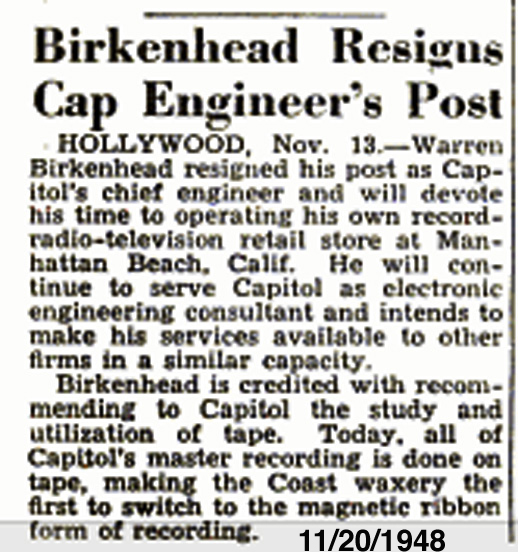 
 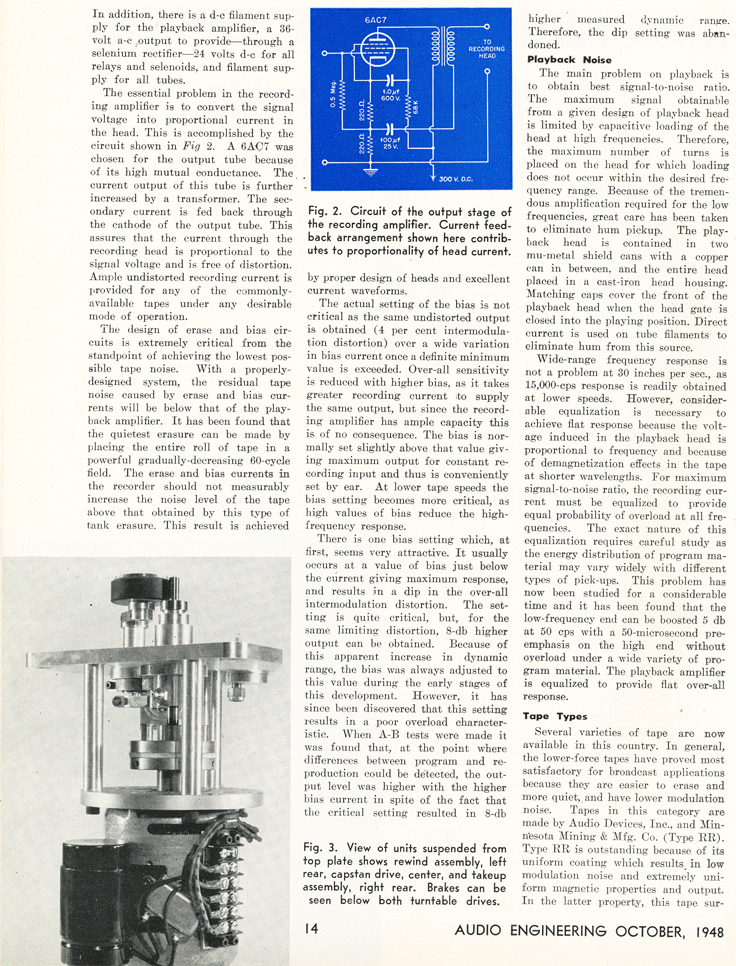 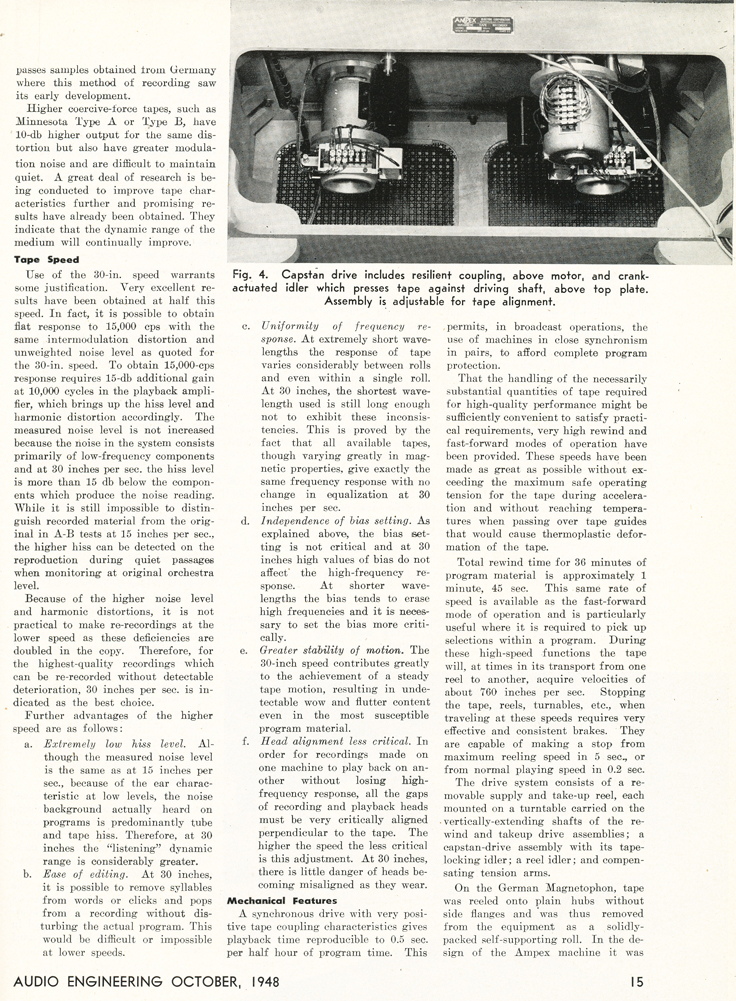 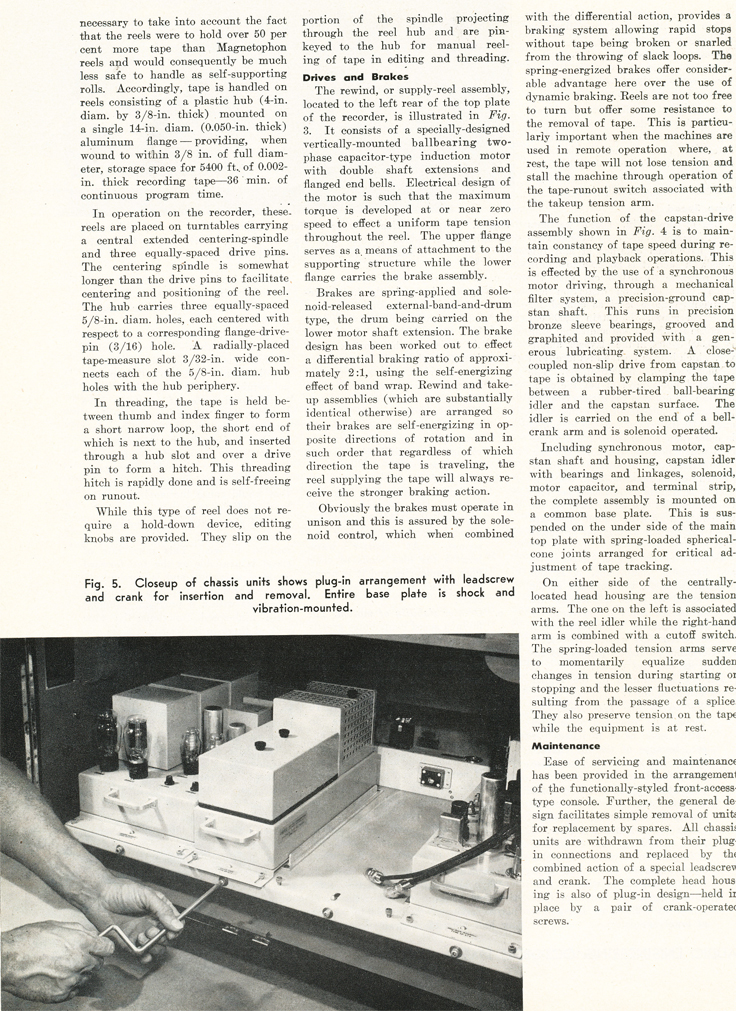
.
 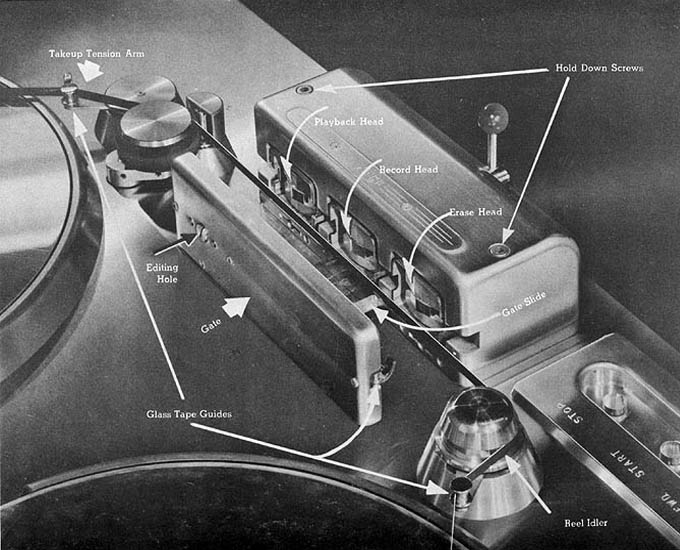
John T."Jack" Mullin seen above in 1949 with the Ampex 200-A and the new Ampex 300 in portable cases• head blocks showing original tape backing facing in. This was later changed to the backing facing out as it remained throughout the remainder of reel to reel production.
As many folks know, John T. "Jack" Mullin (1913 San Francisco - 1999) who was in the US Army Signal Corp., after WW II brought back to the US, 2 German Magnetaphon reel to reel magnetic tape recorders. Mullin took the 2 Magnetophons apart and shipped them back to the US in 18 boxes (to comply with US war souvenir requirements). Also included were 50 rolls of tape. In late 1945 as Mullin was returning from France, he stopped in New Jersey and joined his friend Richard Ranger for Thanksgiving. Mullin shared his information about the Magnetophons and Ranger made a trip to Europe to obtain more first hand information and decided to pursue building a US tape recorder based on the magnetophon information. 
Mullin continued on to his home in San Francisco and was happy to find the 18 boxes had arrived safely. He decided to go to work with William A. Palmer studios(founded W.A. Palmer & Co. in San Francisco in 1936) and after tweaking the electronics (converting to US tubes and placing pre-emphasis on the high frequency record circuit and de-emphasis on the playback) the Magnetophons (right) were used to support Palmer's film business. To their knowledge, this was the first time magnetic tape was used to record motion picture sound and the subsequent transfer to film. A memorable Palmer-Mullin demonstration of their magnetic recorders at the MGM studios in Hollywood in October, 1946, grabbed the town's attention with a stunningly clear recording of a studio performance by Jose Iturbi, George E. Stoll and the MGM Symphony Orchestra.
The first public demonstration of the recorders was in San Francisco on May 16, 1946 to the local chapter of the Institute of radio Engineers. Attending the demonstration were Harold Lindsey and Myron Stolaroff who were working for a new company named Ampex (headed by A. M. Poniatoff - company name derived from his initials + Excellence). They had manufactured radar motors for the military in WW II and were looking for new products to develop. After the demonstration, Lindsey and Stolaroff felt magnetic tape recorders would be Ampex's product. 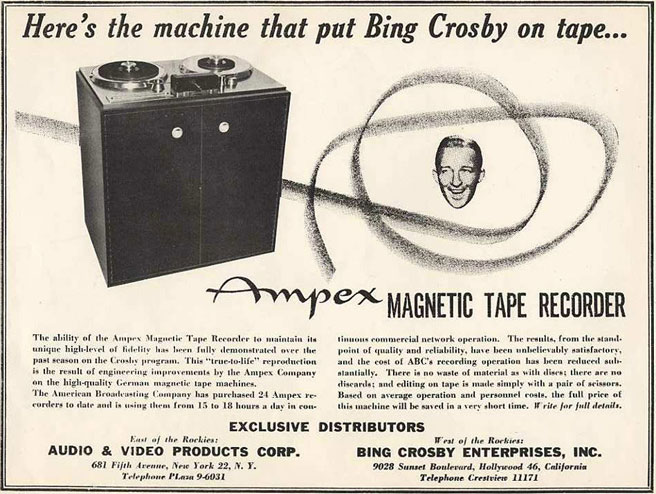
Subsequently for Mullin and Palmer there were many meetings and demonstrations with the result of attracting Bing Crosby's production folks. Mullin eventually went to work for Crosby as his Chief Engineer, using the 2 Magnetophons and the 50 reels of German tape. He edited the Crosby shows splicing the various tape pieces together as Crosby and his producers directed. Mullin introduced Richard Ranger to the Crosby folks and unfortunately a demonstration of the new Rangertone magnetic recorder did not go well. Mullin then arranged demonstrations by the Ampex company and even though the first demonstration was unable to provide recording, the playback quality was sufficient for the Crosby folks to agree to go with Ampex.
There are two versions of what happened next. Either Bing Crosby invested $50,000 into the startup of Ampex recorder manufacturing, or another version says the Crosby interest enabled banks to back the startup. Around this same time 3M was working on developing magnetic recording tape. When there products were tested, Mullin and the ABC folks decided the high end 3M tape was not as good as their low end product. interestingly the iron oxide for the low quality tape was called 112 Raven Red which was also used for red barn paint. ABC bought 24 Ampex 200-As.
The Ampex 200-A was a wonderful sounding machine. Decca (thanks to Bing Crosby) had one of the first ones as did Capitol Records, Melrose. By May of 1949 most major recording studios had one. By June, 1950, NBC, CBS, Mutual, Dumont, etc. had at least one. ABC Radio of course had the first one for Bing back in 1948 and bought 6 others with Bing advancing the money.. Les Paul used his Ampex 200 (modified) to make his amazing records with Mary Ford.. Originals were "B" wind with tape going up and around, inside out.
What does the machine sound like? "(We're Gonna) ROCK AROUND THE CLOCK" was recorded on an Ampex 200-A as were Nat King Cole's "MONA LISA", "UNFORGETTABLE", Mario Lanza's "BE MY LOVE", Frank Sinatra's "YOUNG AT HEART", Tennessee Ernie Ford's "SIXTEEN TONS", etc. Awesome sound at 30 IPS (source unknown)
Ampex is said to have spent $76,000 to develop the first Ampex 200-A's.
Excellent AES Ampex article by John Leslie and Ross Snyder
There were 112 Ampex 200A's manufactured. Here are some pages from the Ampex upgrade of the 200-A to the 201 configuration in1949.Leslie and Snyder's article states "Ampex delivered the first production Model 200A in April, 1948, to Jack Mullin; the second recorder followed a few days later. Jack used serial numbers 1 and 2 for recording the Bing Crosby Show. Many of the rest of the first production run of 20 went to ABC in Chicago where they were used mainly for broadcast time delay."
 Bing Crosby and Les Paul in picture on left. John Mullin in his interview for Billboard in 1977 says the first 200-A's went to him. Bing Crosby (right)with the new Ampex 200A reel to reel tape recorders Bing Crosby and Les Paul in picture on left. John Mullin in his interview for Billboard in 1977 says the first 200-A's went to him. Bing Crosby (right)with the new Ampex 200A reel to reel tape recorders
More detail may be viewed in the Billboard Spotlight interview with John Mullin, November 18, 1977.
Reel2ReelTexas.com'sAmpex 200 reel tape recorder number 33 was originally purchased by Capitol Records. It was subsequently acquired by Leo De Gar Kulka "The Baron." After Mr. Kulka passed away in 1998 the Ampex 200 was acquired from the estate by Nicholas Douhovnikoff. Leo De Gar Kulka first began recording bands while working for Autumn Records in LA. In the 1950's and1960's he worked at LA studios (first at Radio Recorder) then he secured his own facility International Recorders, where he cuts tracks for artists including; Frank Sinatra, Nat "King" Cole, Little Richard, Herb Albert, Sam Cooke plus many more. Eventually he established Golden State Records. More (from Nephew David Kulka)
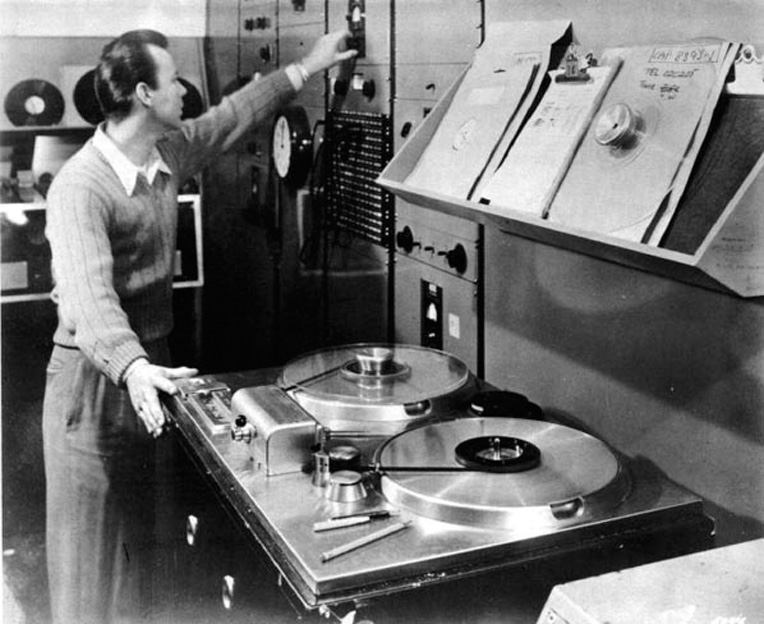  
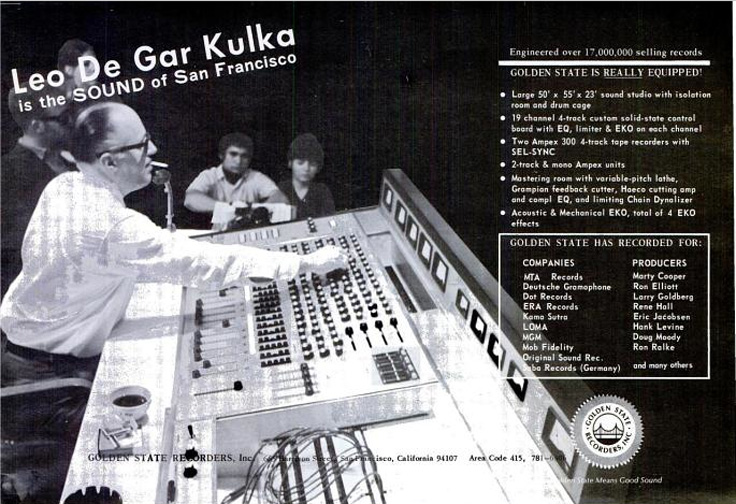 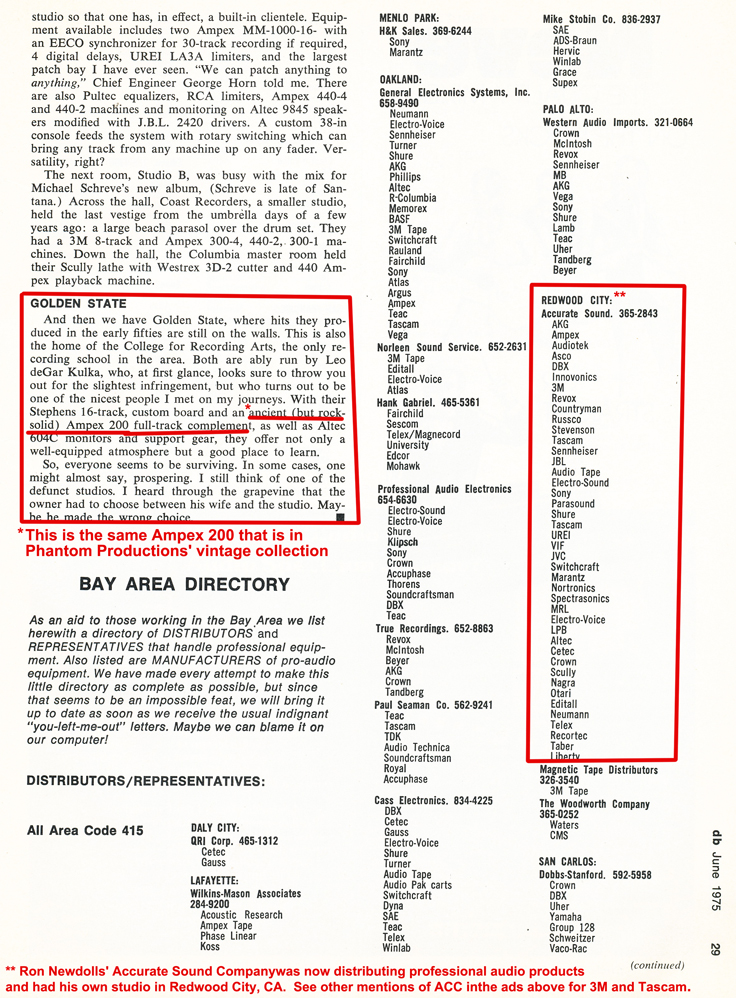  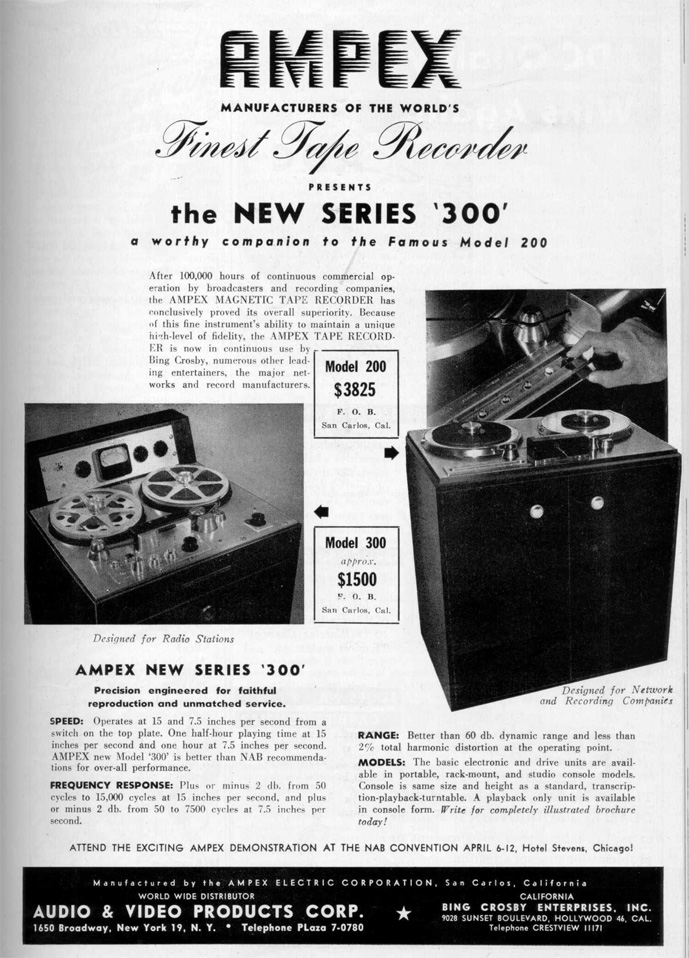 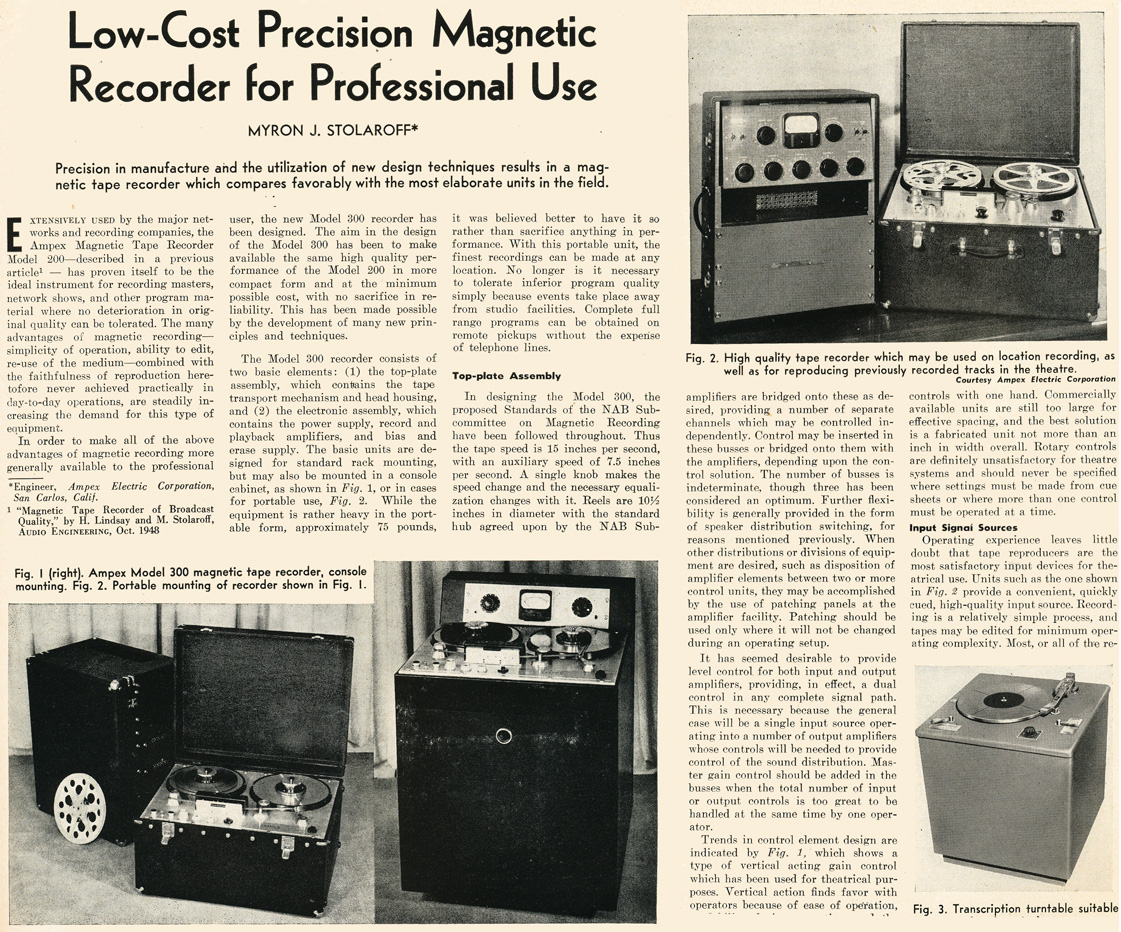 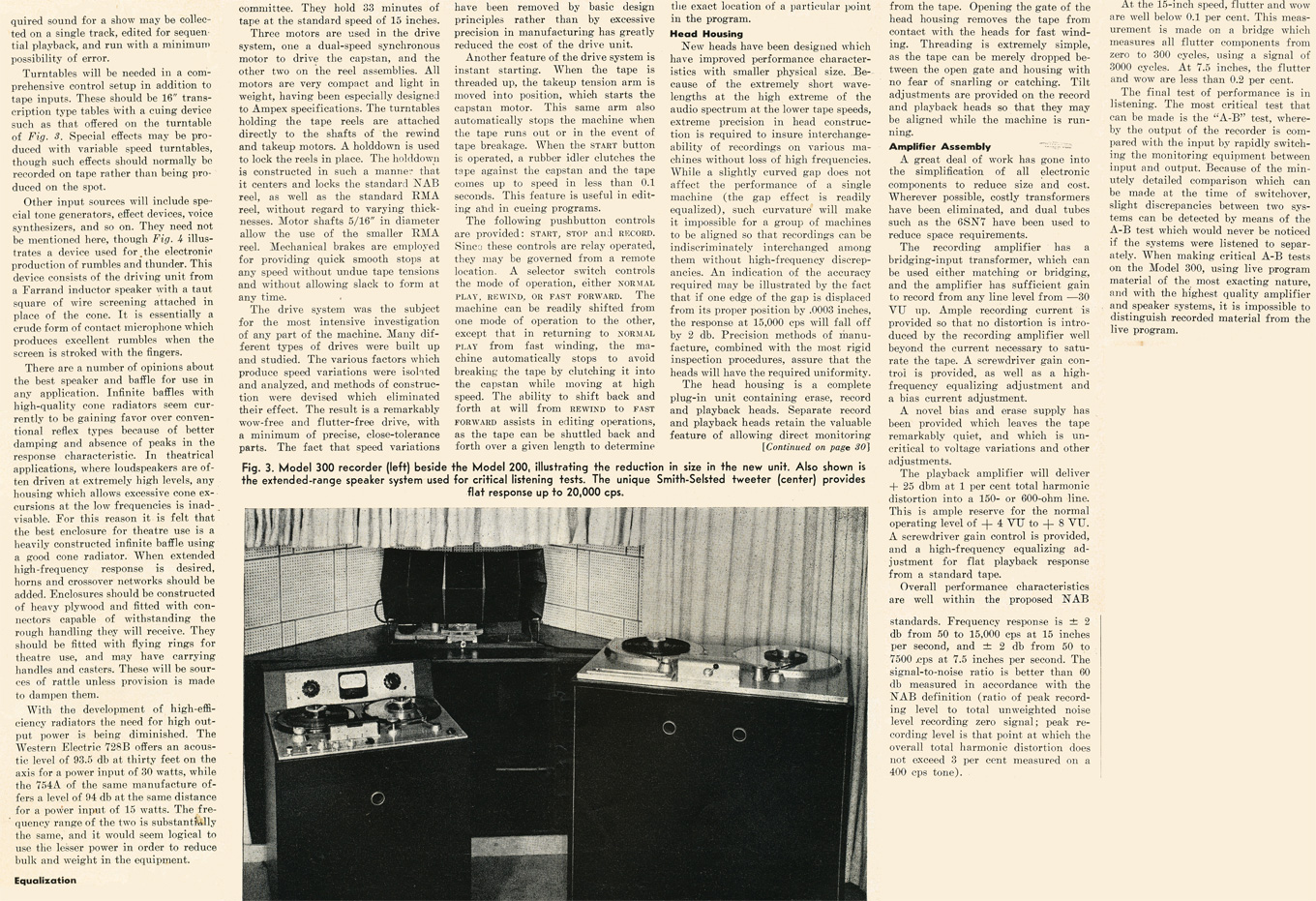  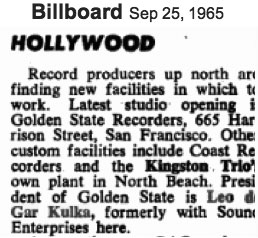
Leo's Nephew mentioned that Cher may have worked as a receptionist for Golden State when Sonny & Cher were completing early recordings.
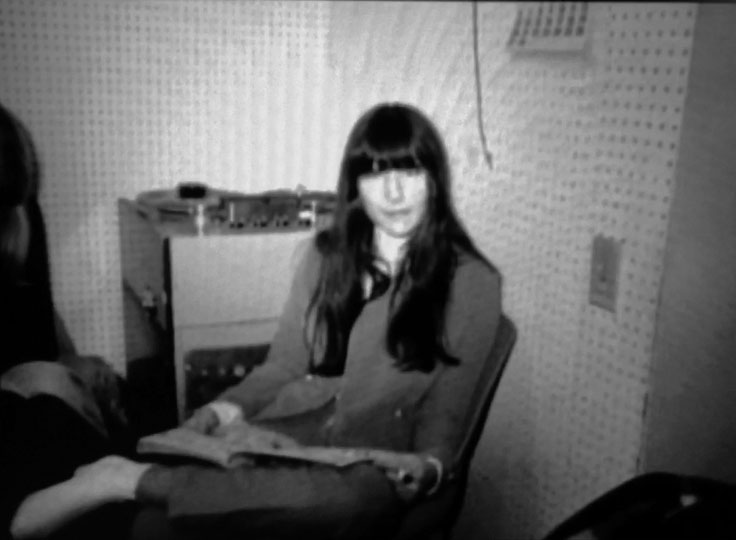 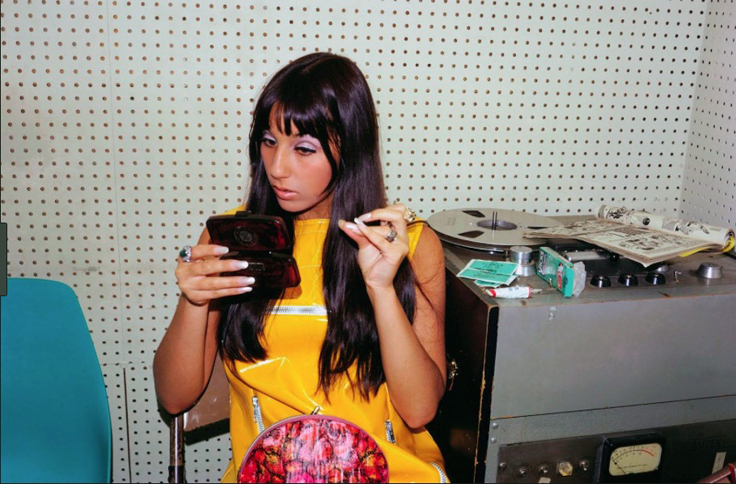
Leo De Gar Kulka
At International Sound, Leo De Gar Kulka recorded artists such as Frank Sinatra, Nat "King" Cole, Little Richard, Herb Alpert, Sam Cooke, and Sonny Bono.
Leo De Gar Kulka is credited with working with numerous well known artists including: Sly Stone, Grace Slick, Janis Joplin, Michael Bloomfield, Big Brother, The Sons of Champlin, It's A Beautiful Day, and Quicksilver Messenger Service.
He also founded of the San Francisco Chapter of the NARAS. He chaired the San Francisco AES for several terms, and organized the 93rd AES Convention in San Francisco.
The Big Hurt 
Leo deGar Kulka engineered for Wayne Shanalin's Big Hurt. They tried to play two machines on playback they flanged and the could not get it in synch.
Thirty years later White Light Productions (Chris Njirich & Bob Giudice) the Big Hurt, hiring Barry Beam and Riche Ray to co-produce, and a vocalist named Marianna and the "big hurt begins." Because of it's reputation we mastered at Sonic Arts only to find out that Leo who mastered the first Big? Hurt now owned Sonic Arts and mastered our Big Hurt.
SFLightBear
|
Tequila 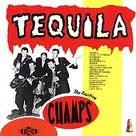
This was originally released as the B-side of "Train to Nowhere." Disc jockeys flipped the single and played this instead.
Not performing on this record, but later members of the group were Glen Campbell, Jimmy Seals and Dash Crofts (Seals & Crofts of 70s fame). Rio wrote the song. (thanks, WC - Charlotte, NC, for above 2)
According to Leo Kulka, who was the second engineer, this song was an afterthought after the band recorded "Train to Nowhere" (the A-side of the record). Some of the musicians had already left the studio when it was brought up that nothing had been recorded for the B-side. The remaining musicians were rounded up and the song was written on the spot. The "Tequila" part of the song was simply a silly attempt to cover up the holes in the song. After all, it was just the B-side. (thanks, Keith - Reno, NV)
This was featured in the 1985 movie Pee Wee's Big 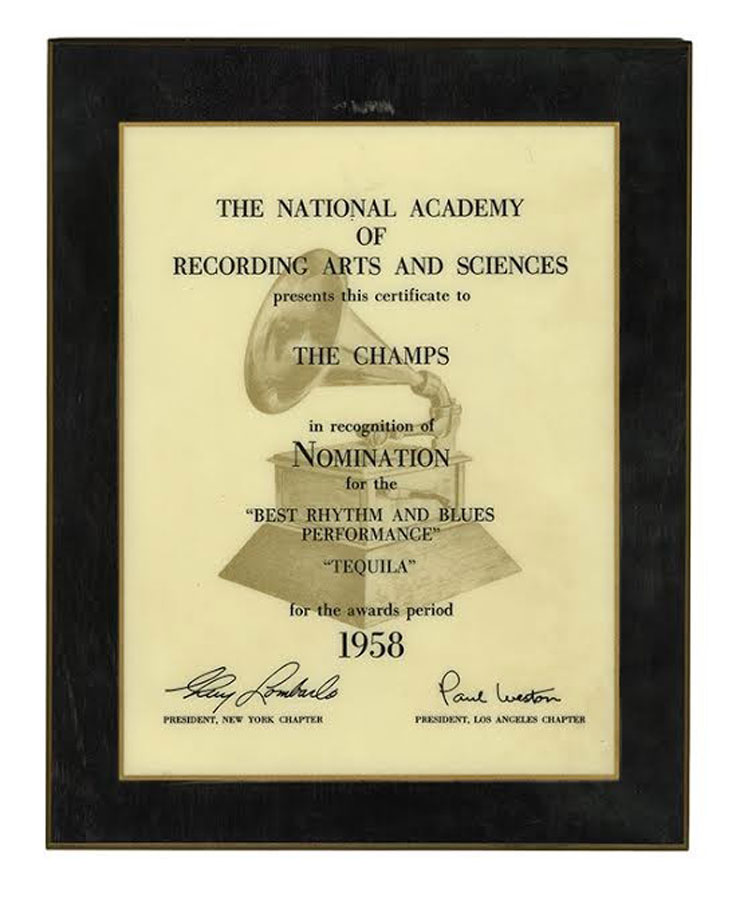 Adventure. It was used in a scene where Pee Wee Herman wins over the crowd in a biker bar by doing a dance to the song. The movie was the first feature film directed by Tim Burton, and Danny Elfman wrote the score. Adventure. It was used in a scene where Pee Wee Herman wins over the crowd in a biker bar by doing a dance to the song. The movie was the first feature film directed by Tim Burton, and Danny Elfman wrote the score.
This won for Best Rhythm & Blues Performance at the first ever Grammy Awards in 1959. (thanks, Bertrand - Paris, France)
|
The First Grammy ever
On May 4, 1959 at the Beverly Hills Hotel, the Champs were awarded the very first Grammy in the "Best Rhythm and Blues" category for their 1958 song, "Tequila," .

The Champs Tequila Grammy (the very first Grammy) was auctioned off in April of 2015 for $30,000. info Grammy program
|
Quicksilver Messenger 
Located on San Francisco's Harrison Street, Golden State Recorders attracted a number of Northern California hippies looking to lay down some tracks.
Owned by Leo De Gar Kulka and home to the Golden State label (which had artists like Wally Cox and The Real Thing and the TCBs), Golden State Recorders was most well-known for being the recording hangout of Dino Valenti's Quicksilver Messenger Service, who recorded their Happy Trails album there in 1969.
|
Golden State Records
Billboard - October 26, 1968
"Golden State Records also has 8-track equipment and a four-man engineering staff. Business is double over last year, says owner Leo Gar Kulka. Upstairs Kulka has installed a rehearsal room(with a 2-track machine) renting for $7.50 an hour. Because his business is almost all pop groups, Kulka helps them study their performance by giving them a tape of their studio session "to analyze exactly what they've done."
Kulka's side business of managing and recording local groups has resulted in his placing 32 acts with a number of labels. E.H. Morris recently took over world-wide administration of Kulka's publishing companies."

|
Grateful Dead 
The Autumn Sessions was recorded at Golden State Recorders in San Francisco in November 1965. The band used the space under the assumed name of The Emergency Crew (originally the Warlocks, however, one of the band members saw another band using the name).
Disc 1 - Autumn Records sessions (tracks 1 to 6);
Producer - Tom Donahue, Bobby Mitchell
Engineer - Leo De Gar Kulka
Recorded on November 3, 1965 at Golden Gate Recorders, San Francisco
The Emergency Crew - The Emergency Crew (Autumn ) The pre-Warlocks Grateful
Dead recorded this on November 3, 1965 as a demo record at Golden State
studios in San Francisco for DJs Tom Donahue's and Bobby Mitchell's Autumn
label. Mother's was a club run by the two DJ's. The recordings was made on a
two track tape, at 7 1/2 ips. It includes: "Can't Come Down" (Jerry Garcia
on vocals); "The Mindbender" (also known as "Confusion's Prince") (Phil Lesh
on vocals); "The Only Time Is Now" (Phil Lesh on vocals); "Caution (Do Not
Stop On Tracks)" (Pigpen on harmonica and vocals); "I Know You Rider" (Jerry
Garcia on vocals); and Gordon Lightfoot's "Early Morning Rain" (Phil Lesh on
vocals). Garcia wrote most of the lyrics for "Can't Come Down". Lesh wrote
most of the lyrics for "The Mindbender". Golden State Recorders was located
at 665 Harrison Street, San Francisco, CA 94107, 415-781-6306. The club
Mother's is presently The Stone, which is across from The Mabuhay Gardens.
|
|

Billboard - May 20, 1967
|
|
| |
Leo de Gar Kulka
Leo De Gar Kulka (February 17, 1921 – March 17, 1998) was a Czech-born American record producer, recording engineer and educator. Starting in Los Angeles at Autumn Records in the 1960s, he later founded the San Francisco studio Golden State Recorders, trade school College for Recording Arts and audiophile record label Sonic Arts. Kulka is considered a pioneer in the modern recording industry.
Leo de Gar Kulka was born in 1921 in Brno, Czechoslovakia.
After studying engineering, Kulka moved to Los Angeles in 1938. During World War II and Korean War, he served in the U.S. Army Counterintelligence Corps (CIC), retiring with the rank of major. Kulka's wartime experiences with wire recorders and radio transmission sparked a lifelong passion for recording and music. In the early 1950s he became a staff engineer at Radio Recorders at 6000 Santa Monica Blvd, Hollywood. Kulka was known by recording industry friends as "The Baron".
In 1957 he founded International Sound, one of the first multitrack facilities in Hollywood. The studio, located on Sunset at Western, later became Sunwest. His Neumann mastering room was the first in the city to feature a stereo cutting head. At International Sound, Kulka recorded artists including Herb Alpert, Nat King Cole, Sam Cooke, Frank Sinatra, Sonny Bono and Little Richard
In 1964 Kulka moved to San Francisco and founded Golden State Recorders, one of the largest recording studios in northern California. With a Stephens 16-track recorder and a custom multitrack console, he contributed to the "San Francisco Sound", by recording artists Sly & The Family Stone, Grace Slick, Janis Joplin and Michael Bloomfield.
During that period, Kulka was working for Autumn Records recording bands Part ne ring with Sylvester Stewart, the leader of Sly & The Family Stone, Kulka arranged an early recording for the group, resulting in a single on the Lodestone label, "I Ain't Got Nobody" / "I Can't Turn You Loose He and Stewart also collaborated on recordings by The Great Society for which both were the original session producers
For over 10 years Kulka lectured in Audio at San Francisco State University. In 1974 he founded the College of Recording Arts, dedicated to training aspiring music industry employees in all aspects of the industry. CRA is thought to be the first American school to provide unified business and technical education for the recording industry. Having attracted students from the North America, Asia and Latin America. some graduates of the school became successful engineers, producers and studio owners. In 1994 he closed the College of Recording Arts, instead devoting his time to analog and digital mastering, and the restoration of vintage sound recordings.
Kulka was the founder of the San Francisco Chapter of the National Academy of Recording Arts and Sciences (NARAS) and served as chairman for three terms. He headed the NARAS Institute, the educational arm of the society for an additional two years. As a member of the Audio Engineering Society since 1959, he first served in Los Angeles, and then as chairman of the San Francisco Section for multiple terms.
Kulka was elected to the AES board of Governors from 1989/1990 and 1992/1993 to 1993/1994 He was chairman of the 93rd Convention that was held over October from the 1st to 4th San Francisco in 1992 In 1993 Kulka was elected treasurer and chairman of the Finance Committee.
Kulka was known as a flamboyant, unforgettable character. Tall and stout, with a basso profundo voice and a Czech accent, Kulka had a commanding presence. Bald-shaven and with a neatly trimmed mustache, he was an endearing jokester and raconteur. He was known to speak in cartoon voices and offer witty sayings such as "I'd rather be a has been than a never was." In his later years he would ruefully say, "It's getting to where I have more friends in the cemetery than I do in town." In his disc mastering class, he would remind the students, "Always clean the cutter head stylus with pith." Then he would wink and whisper "I'd better be careful how I pronounce that word."
The Neumann disk mastering room at Golden State was Kulka's pride and joy. In the 1970s and 1980, he continued to innovate, using the room to master multiple "direct to disk" audiophile recordings, as well as binaural stereo recordings for the Sonic Arts label
Although Kulka enjoyed experimenting with new recording techniques, he was a traditionalist at heart. He professed a "back to basics" approach to his students, requiring them to understand the fundamentals of musical instruments, sound, and microphones before ever touching a limiter or equalizer. Kulka relished his 40 year old Ampex model, 200 the first American-produced tape recorder. He may have been the last living audio engineer to routinely edit tape without a splicing block or a razor blade. Instead, he laid a section of tape across his left hand, precisely lining it up with his thumb and finger, and using a small scissor, made a cut that would join perfectly.
Awards
For his AES chairmanship he received a Board of Governors Award In 1995 he was awarded with an AES Fellowship Award for his contributions to education and sound recording practice.
Death
Leo De Gar Kulka died on March 17, 1998 aged 77 He was survived by his wife, Pat, and daughter Lily
Recordings
Compilations
- Afterglow, Afterglow, 1968
- Armageddon, The Maze, 1969
- Birth Of The Dead, Grateful Dead, 2003
- Born To Be Burned, The Great Society, 1995
- Brazilian Tapestry, George Muribus, 1976
- Casting Pearls, Mill Valley Bunch, 1972
- Compilations of music recorded at Golden State Recording 1966-1973
- Crystallize Your Mind, Various Artists, 1994
- Feel...The Vejtables, The Vejtables, 1995
- Gold, Gold, 1996
- Golden State Funk: Impossibly Rare Funk From The Bay Area, Various Artists, 2000
- Golden State Soul: San Franciscan Dancers & Smoochers, Various Artists, 2000
- Good Things Are Happening, Various Artists, 1994
- Happy Trails, Quicksilver Messenger Service, 1969
- Introducing, The Beau Brummels, 1965
- Introducing, The E-Types, 1995
- Listen To The Voices: Sly Stone In The Studio 1965-70, Various Artists, 2000
- Little Girl, Syndicate Of Sound, 1966
- Long Years In Space, The Neighb'rhood Childr'n, 1997
- Loosen Up Naturally, The Sons of Champlin, 1969
- Mad River, Mad River, 1968
- No Matter What You Say: The Best of, Butch Engle & the Styx, 2000
- One Stormy Night, The Mystic Moods Orchestra, 1966
- Paradise Bar & Grill, Mad River, 1969
- San Fran Sessions, The Beau Brummels, 1996
- Steelyard Blues, Gravenites/Bloomfield and others, 1972
- The Amazing Charlatans, The Charlatans, 1996
- The Love Exchange, The Love Exchange, 1968
- The Mourning Reign, The Mourning Reign, 1998
- The Neighb'rhood Childr'n, The Neighb'rhood Childr'n, 1968
- Weeds, Brewer & Shipley, 1970
- What A Way to Come Down, Various Artists, 1997
- You Got Yours! East Bay Garage 1965-1967, Various Artists, 2007
Singles
- Leo And Flora De Gar Kulka – "A Merry Christmas And A Happy New Year" - Golden State Records – M-1967 (single-sided 33 ⅓ RPM sin]
- Millie Foster - Millie Foster Feels the Spirit - MGM SE 4897 - 1970
The album featured Michael Bloomfield on guitar.
CDs
- Sly & The Family Stone - Slyfest Freshest Funkiest Rarest Cuts - Magical Mystery Compact Disc MMCD-00002 - 1995
Album consists of 4 tracks that Sly & The Family Stone cut in 1966 for Kulka's Golden State Recorders Studio.
The tracks consisted of "Can't Turn You Loose," "I Ain't Got Nobody," "Take My Advice," and "Life of Fortune and Fame." There were also 20 outtakes. Michael Briggs was the co-producer
- Andre Previn & Los Angeles Philharmonic Orchestra - PROKOFIEV: Alexander Nevsky, Lieutenant Kijé - Telarc CD-80143
- Stephen Kates, Carolyn Pope Kobler - PROKOFIEV: Rachmaninoff: Sonata in G-minor, Op. 19 for Cello and Piano - Bainbridge BCD-6272
- Jeremy Menuhin - Mozart: Piano Concerto No 13, Lucio Silla Overture (Conducted by George Cleve) - Bainbridge BCD-6273
- Tibor Szasz - Beethoven: Sonata No.32, Op.111; Sonata No.21, Op.53 - Bainbridge BCD-6275
|
| |
Ampex 200A #33 Golden State Recording Studios - David Buell
David provided the following information which includes his time at Golden State Recording Studios in San Francisco when Leo De Gar Kulka had the Ampex 200A #33 which is in the MOMSR collection.
In 1978, I temporarily moved from Dallas to San Francisco to attend The College for Recording Arts, which was held at Golden State Recorders. At the time, it was one of the only schools in the country teaching recording, disc mastering and other aspects of the music business. As you know, Leo was the owner of Golden State and Sonic Arts disc mastering.
Leo was VERY proud of his Ampex 200 and enjoyed telling stories about it and it’s use at Capitol. He was also very protective of it and wouldn’t allow anyone to use it. Somehow, I managed rise up to be one of the top in my class. I only mention that because, during my final recording project, I talked Leo into letting me record a wind chime sound effect onto the 200 that I then flew into my mix. I had plenty of tracks left on the Stephens 16-track, but for some reason (the challenge maybe?) I wanted to fly it in live during the middle 8 of the song, while we bounced the mix to the 2-track. The 200 performed flawlessly and the high end on the chimes sounded so much better coming off a full-track mono piece of tape, rather than being recorded on the Stephens with a track width of approximately 1 channel of a 2-track 1/4”. On top of that, the Stephens didn’t have any noise reduction (no NR at all, anywhere in the studio).
The Stephens also operated flawlessly. I remember that the meter panel on the front of the machine opened like a door and you had to peer around the panel as you aligned the machine to see the meter readings. Certainly not very convenient. :) I was also intrigued by the closed-loop 3M transport. The machine had no remote. We had a dedicated tape op running it and the 2-track.
I learned so much from Leo and all the instructors there. Leo was bigger than life. Tall with a booming voice and a Czechoslovakian accent, I can still see and hear him coming down the hall, arms out wide and saying, “David! So GOOOOD to see you!!”
One practical thing he taught was how to do a full band recording with no overdubs. Placing the players on the room so they could communicate and play off one another and how to have mic leakage be usable and musical.
One philosophical thing he left me with when I graduated (and I think about now as I’m about to retire) is that a lot of people will help me on my engineering journey and it’s my duty, in turn, to help others on their way up the ladder. I’ve tried to do that in my career, but the business now is nothing like it used to be. Not many positions available where you sweep floors, get coffee and work your way up to engineer.
Thanks for letting me ramble on and please don’t hesitate to reach out if there’s ANYTHING that I can do for you and your very worthwhile endeavor…
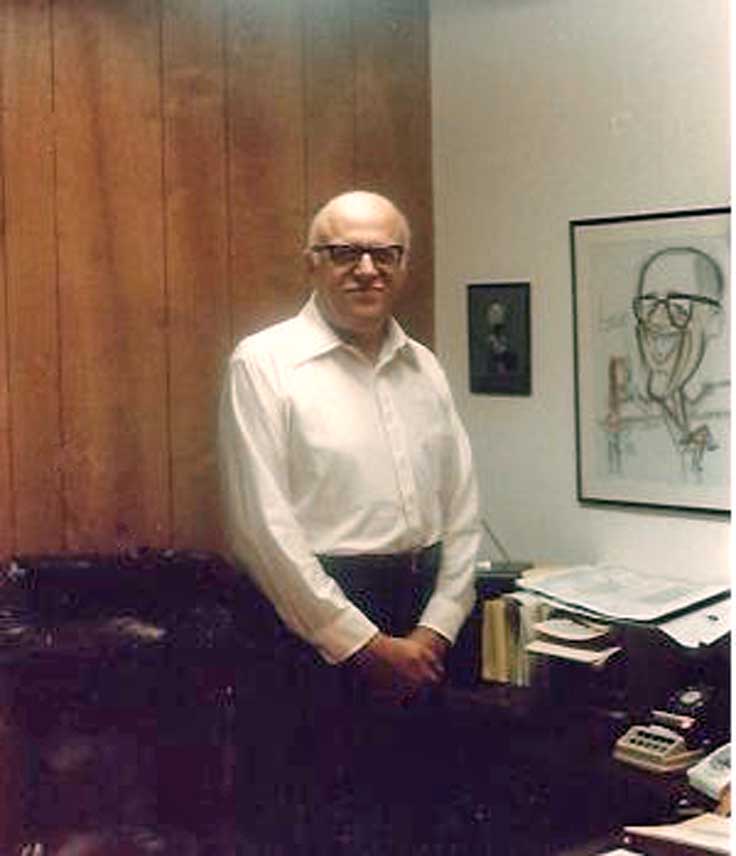
Leo in his office at Golden State Recorders; ca. 1978
|
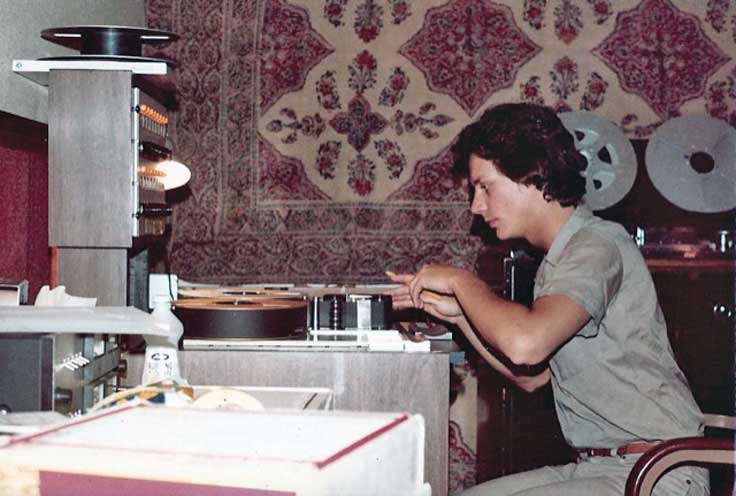
Michael Mason at the Stephens 16 track; The Ampex 200 is in the background; An Ampex AG-440 2 track is underneath the tape boxes in the foreground. We mixed down to a 2 track Ampex 350. Leo was tube man. He didn’t really like the sound of the 440. :)
|
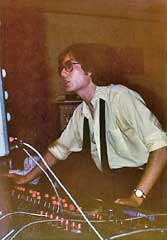 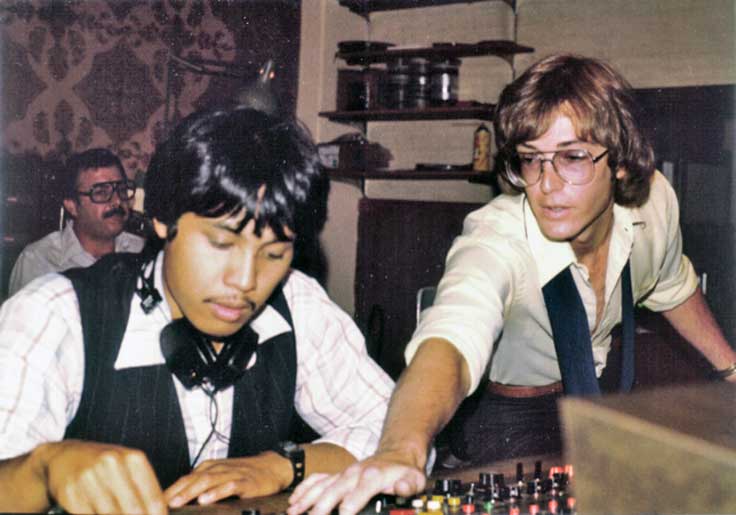
Me behind the Quad Eight console, recording my final project. In the picture on the right, a fellow student mans the monitor section of the console. No inline channels on this baby!
|
Hi David!
It’s interesting that you mentioned the Ampex 200A as a mono machine. At some point the original electronics were removed. When Asleep At the Wheel demoed on the recorder, it had four Inovonics amps and was being used as a four track. I bought another 200 that was supposedly known as the “White” 200s, just to get a set of electronics. Unfortunately the restoration was incomplete, so it will be a work in progress. Cheers! Martin
Hi Martin!
Well there you go, getting me thinking again! :)
I said it was mono, based on nothing but a lingering memory. But now that you ask, currently, I’m not exactly sure of that. I dug out my 1/4” Master of the song, which SHOULD have the wind chimes on it (I also “smuggled out” my 2” 16-track of the session, by replacing it with a new roll of tape-but that’s another story). Once I get a machine hooked up so I can listen, that MIGHT provide us a clue. A LOT of variables, but if the chimes are in stereo, then that would then prove that it was a 2-track, since I'm 100% sure I used the 200 for the chimes, and I’m 100% sure it was on 1/4” tape. If the chimes are mono, then I either recorded it on one channel of the 2-track, or it was a mono machine. I’ll let you know what, if anything, that produces…
I only have a fleeting memory of what was behind the front cabinet doors, As I said, Leo was VERY protective of that machine and took the position of, “there’s nothing to see in there that any of you need to be concerned about”. We didn’t do any kind of alignment on it before the session. It just was what it was. I’m feeling like he told us that to align it, it need some test equipment (VTVM, etc.) hooked up to it and the maintenance department needed to do it. Not the normal front panel adjustments and look at the level meter alignment. He may have made that up to justify not touching anything inside. I'm struggling to form a picture in my mind of what was in there, the one time he did open it up. I do remember him talking about “bathtub (or maybe just “tub"?) electronics, but I didn’t then, nor now, really understand what that meant by that.Does that term mean anything to you?
I was just looking at the pictures of the “White” 200 electronics on your website. I see the two Inovonics electronics, in addition to the chassis electronics, that have the Dymo labels “PB EQ”, “NOISE” (love that one-is that bias?), PB LEVEL etc.. Did those two Inovonics take the place of the electronics in the bottom of the cabinet? Those (I’ll call them the Dymo electronics) are what Ire member inside the studio machine. I don’t have a memory of Inovonics amps or anything like a 300 electronics inside, but that memory is over 40 years old and was from probably the first week of school. I feel like those were maybe what he was referring to as “tub electronics”...
|
| |
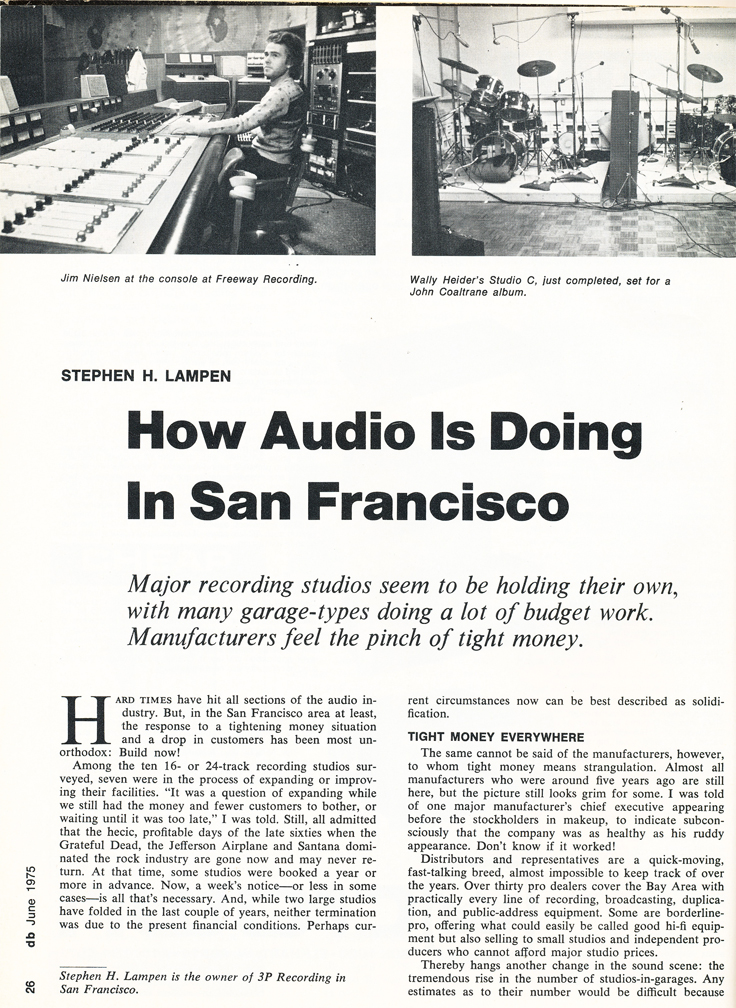 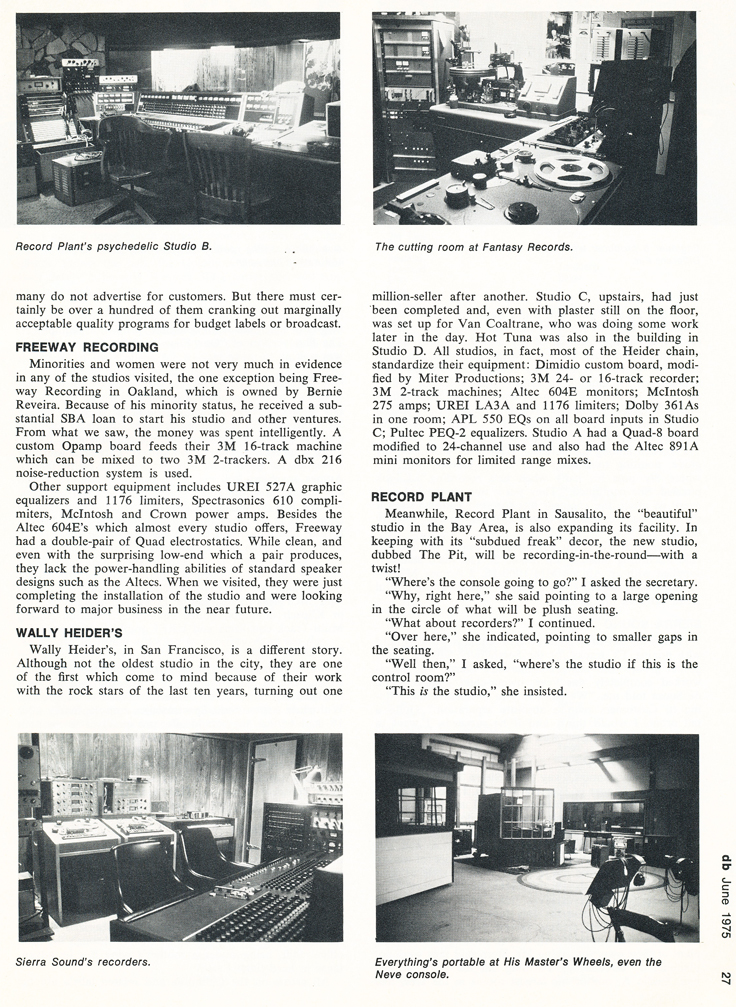 |
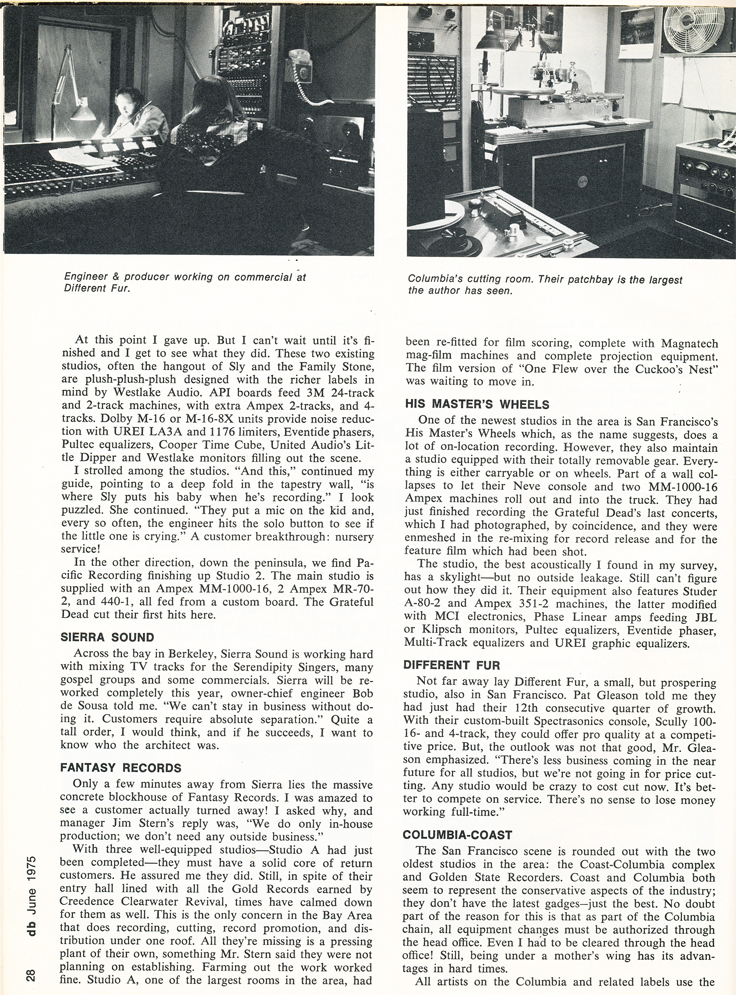

|
|
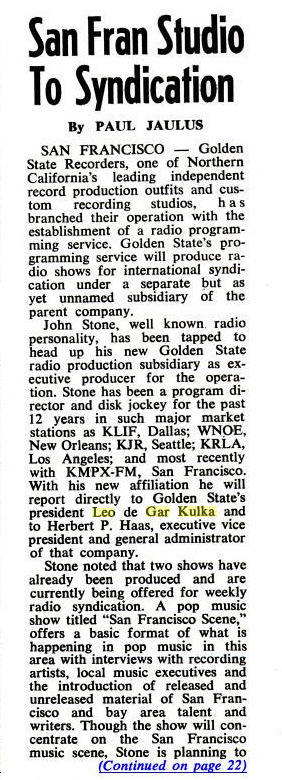 
Billboard - October 30, 1971 |
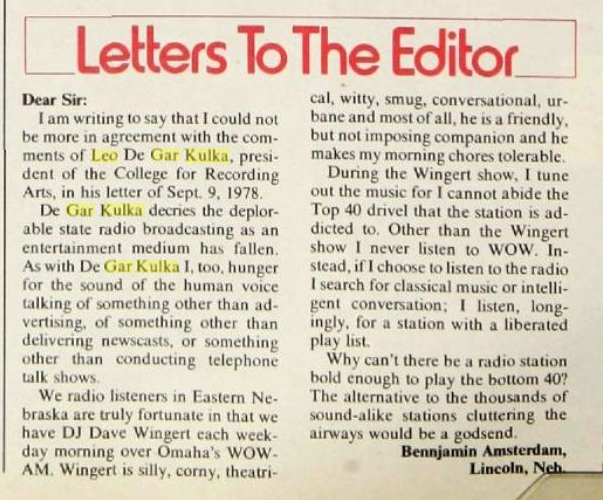
Billboard - Sept. 23, 1978
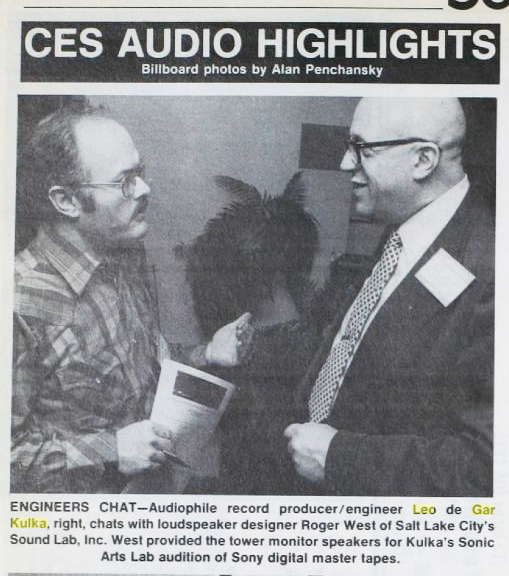
|
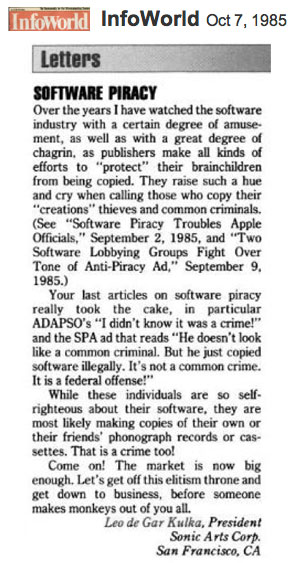
Billboard - January 30, 1982
More at this link |
.
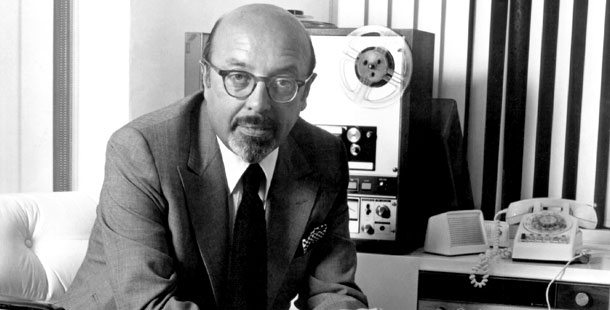 When the Ampex 300 reel tape recorder was acquired by Atlantic Records in 1949, Ahmet Erdogan told the engineer Tommy Dowd that he wanted to keep the disc cutter active for backups - a request he quickly abandoned after hearing the results of the new medium. "Studio Stories - How the Great New York Records Were Made" When the Ampex 300 reel tape recorder was acquired by Atlantic Records in 1949, Ahmet Erdogan told the engineer Tommy Dowd that he wanted to keep the disc cutter active for backups - a request he quickly abandoned after hearing the results of the new medium. "Studio Stories - How the Great New York Records Were Made"
In 1948 Ampex was asked to create a 7 track instrumentation recorder. It was based on the Ampex 301 and released in 1949. It was the first of many instrumentation reorders to be built. Some stats show that 50% of professional recorders produced were for data recording for science, medicine and government.
The Ampex 400 followed the 300, was sold for $1,000. The unit had only 2 motors was was said to have been a disaster. The 400 was discontinued in 1950. The Ampex 350 and subsequently the 351 were produced. The Ampex 600 was said to be comparable to the Ampex 350 in a portable configuration. 80,000 of the original Ampex 600 were manufactured. In the 1950's Ampex produced the 1/2' instrumentation reel tape recorder. The A500 was a 4 track, 1/2", 30 ips recorder sold by Ampex in 1953.
We provide information on all our Ampex recorders at this link.
These are some pictures from the California trip that show some additional recorders that were previously owned by Leo De Gar Kulka. Also click here for a brief movie of some of the recorders. View video
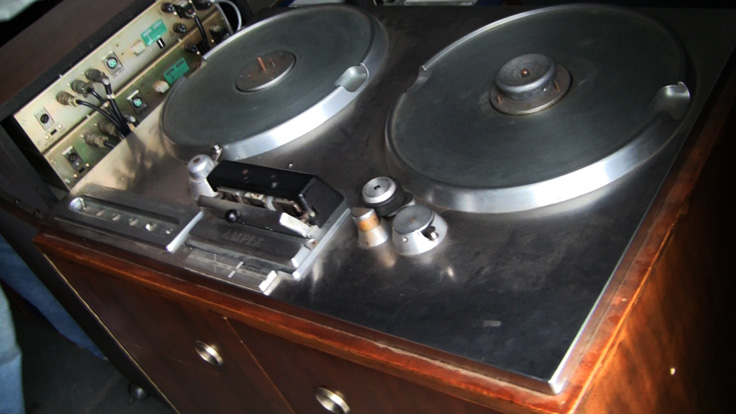  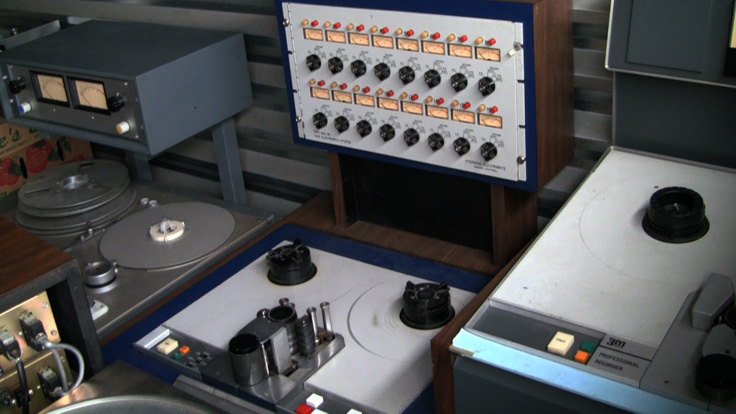 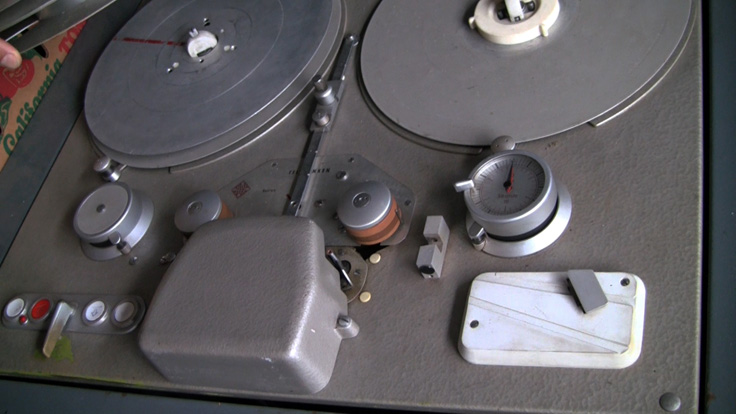 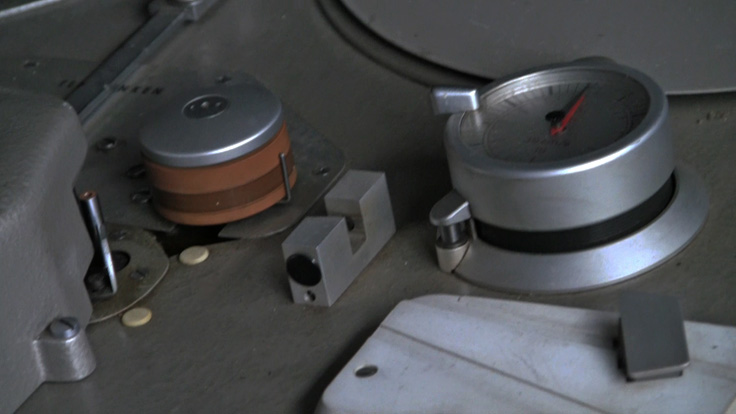 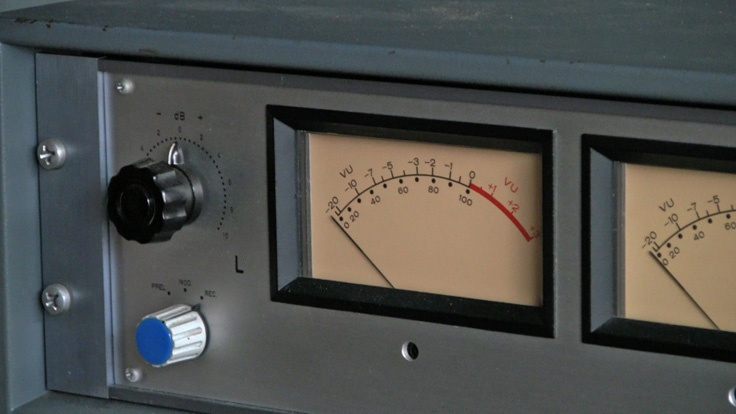   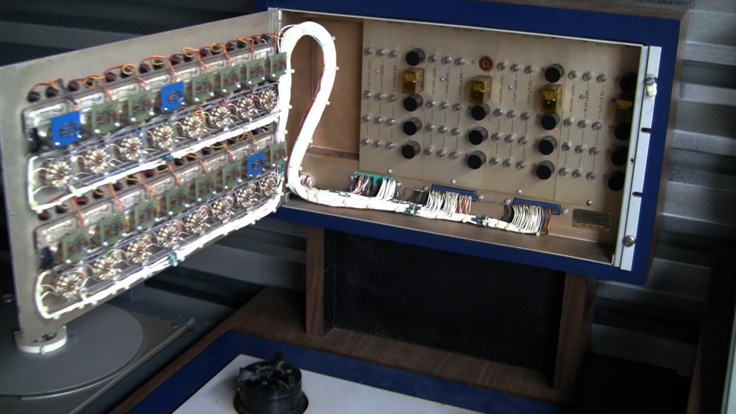  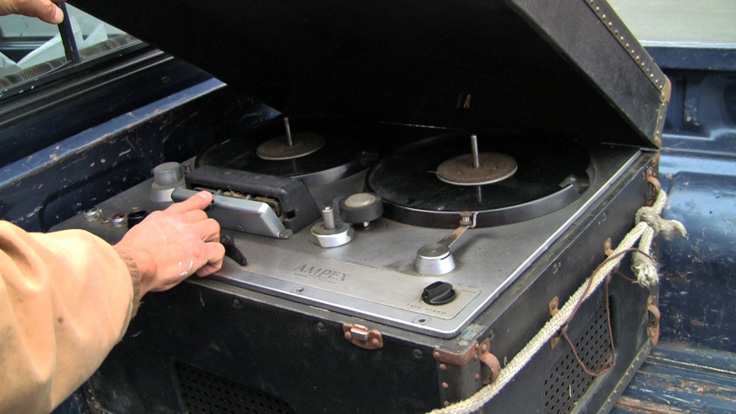 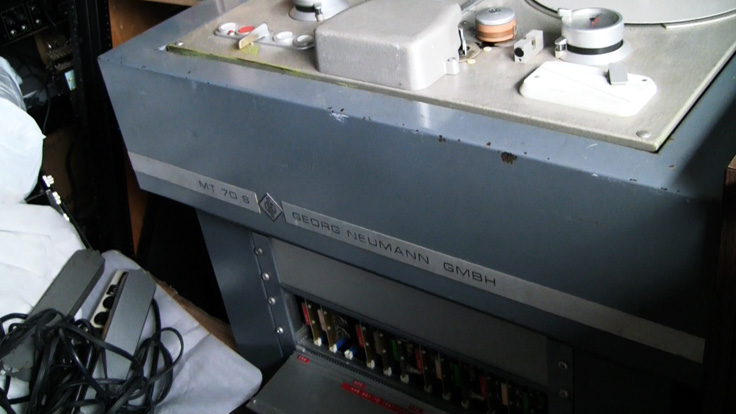
From the Facebook Reel to reel Tape Recorder Group • video by Sameer Verma - "The Ampex 200A in action. Serial No. 1. A rare treat!"
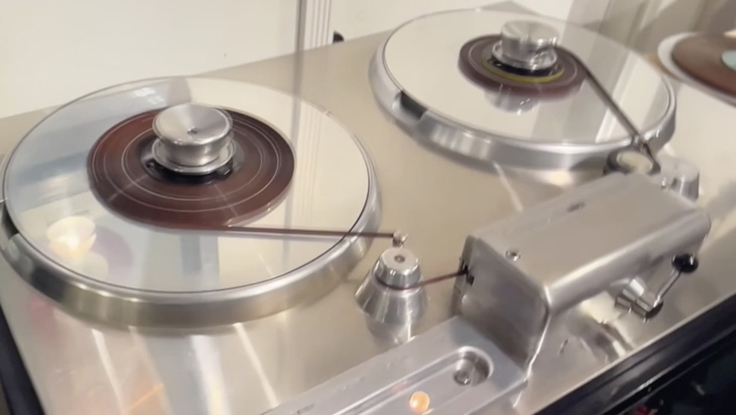
The following photos were donated to the Museum by Michae
l Nezis of Athens Greece. It is the Ampex 200A professional reel to reel tape recorder Relay Unit
AMPEX 200A Relay Unit type EP-277.
Made in the USA in 1948 with serial number 4326.
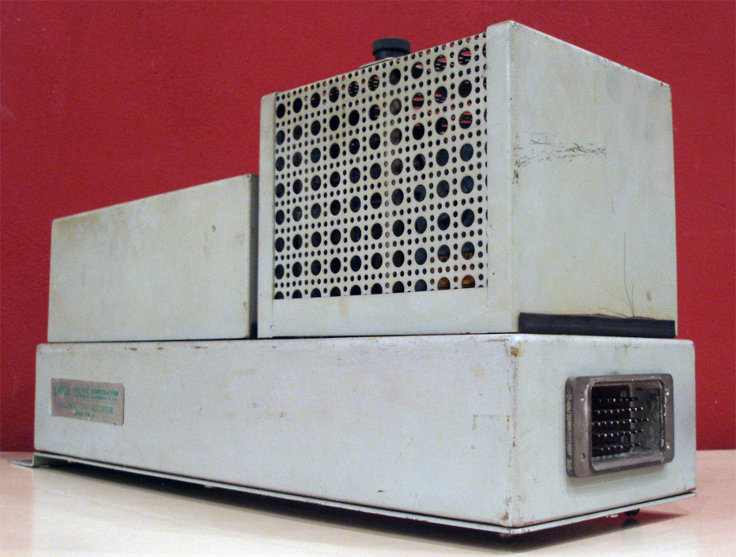 Ax Ax  2 2 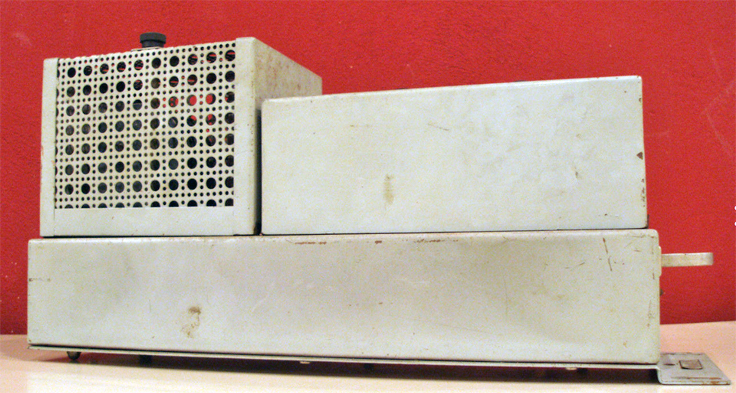 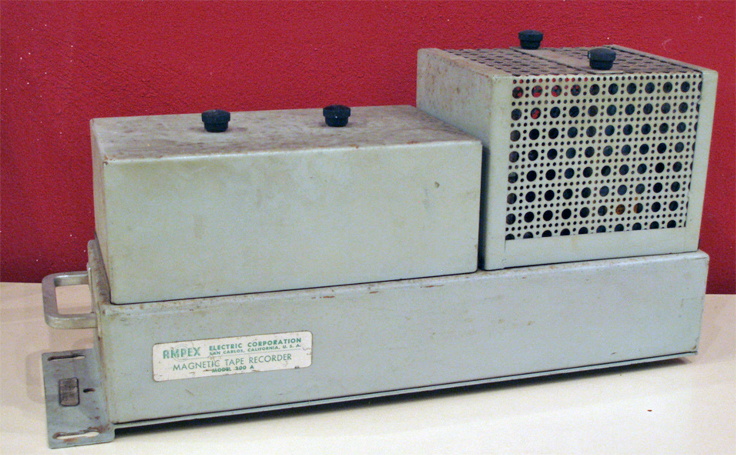   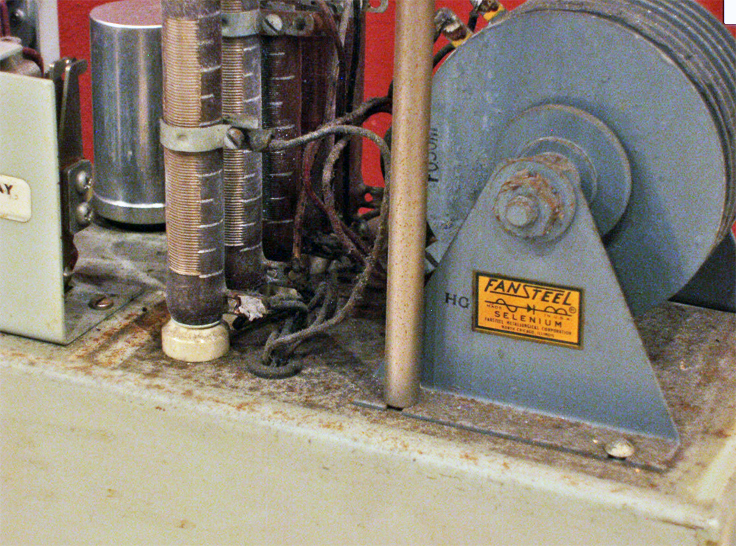 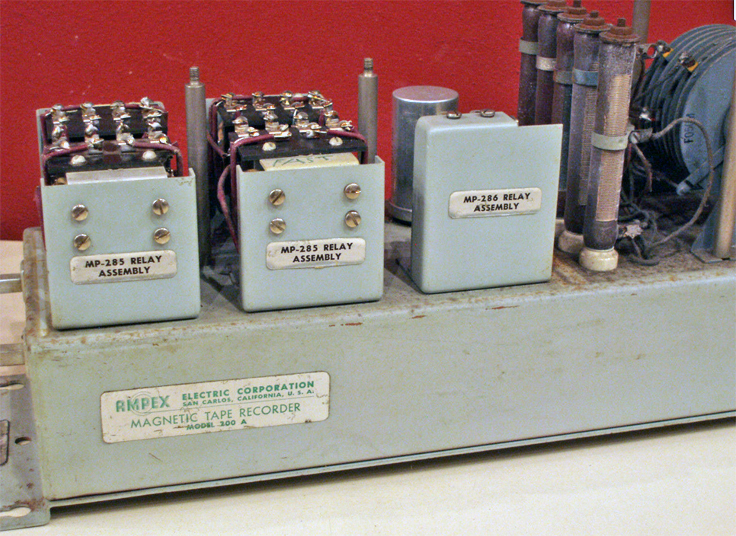 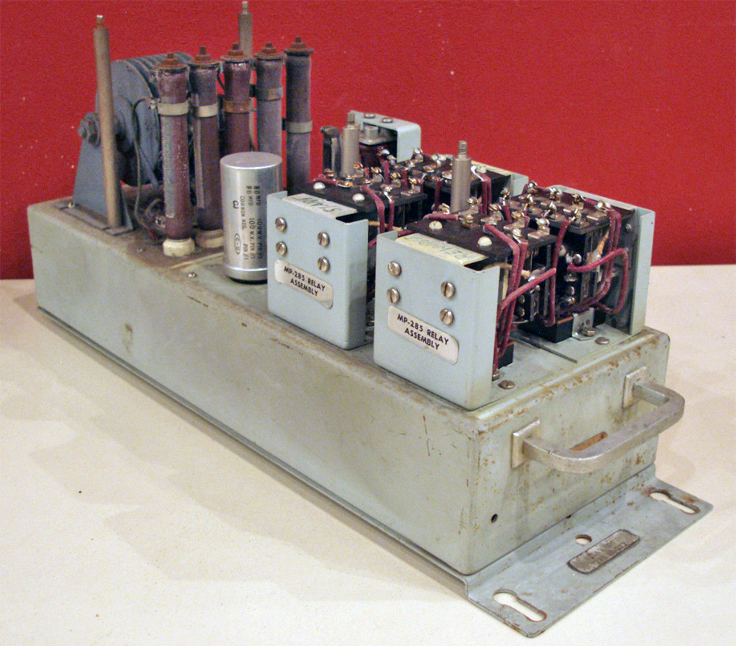 
Facebook 10/21/21
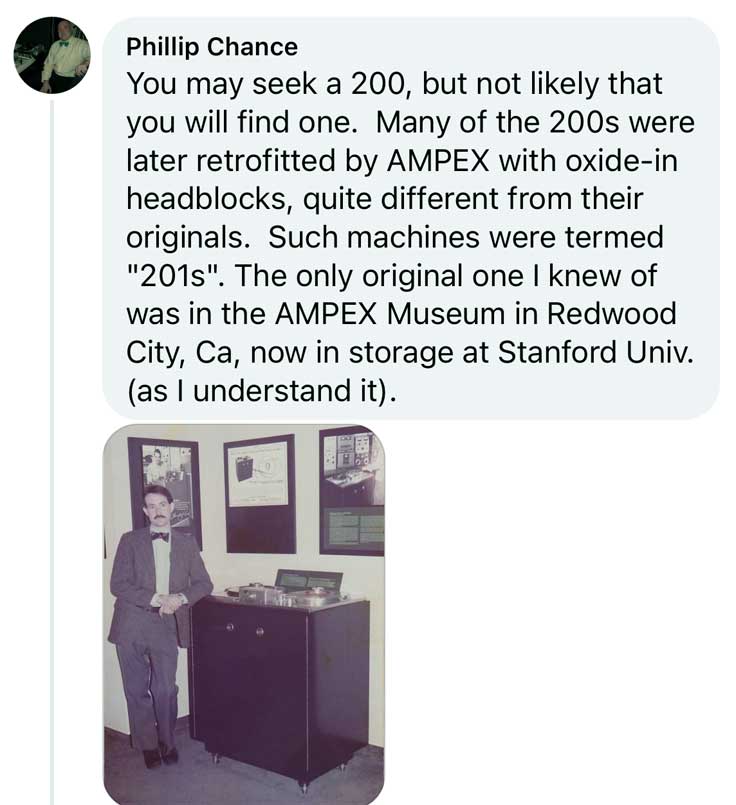 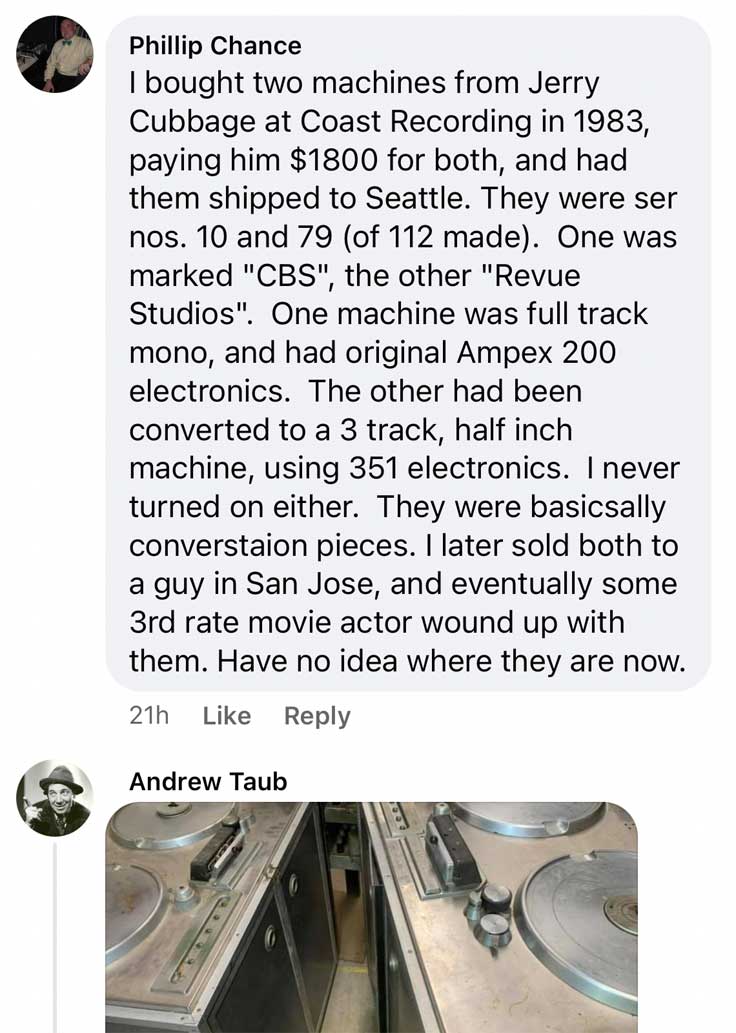 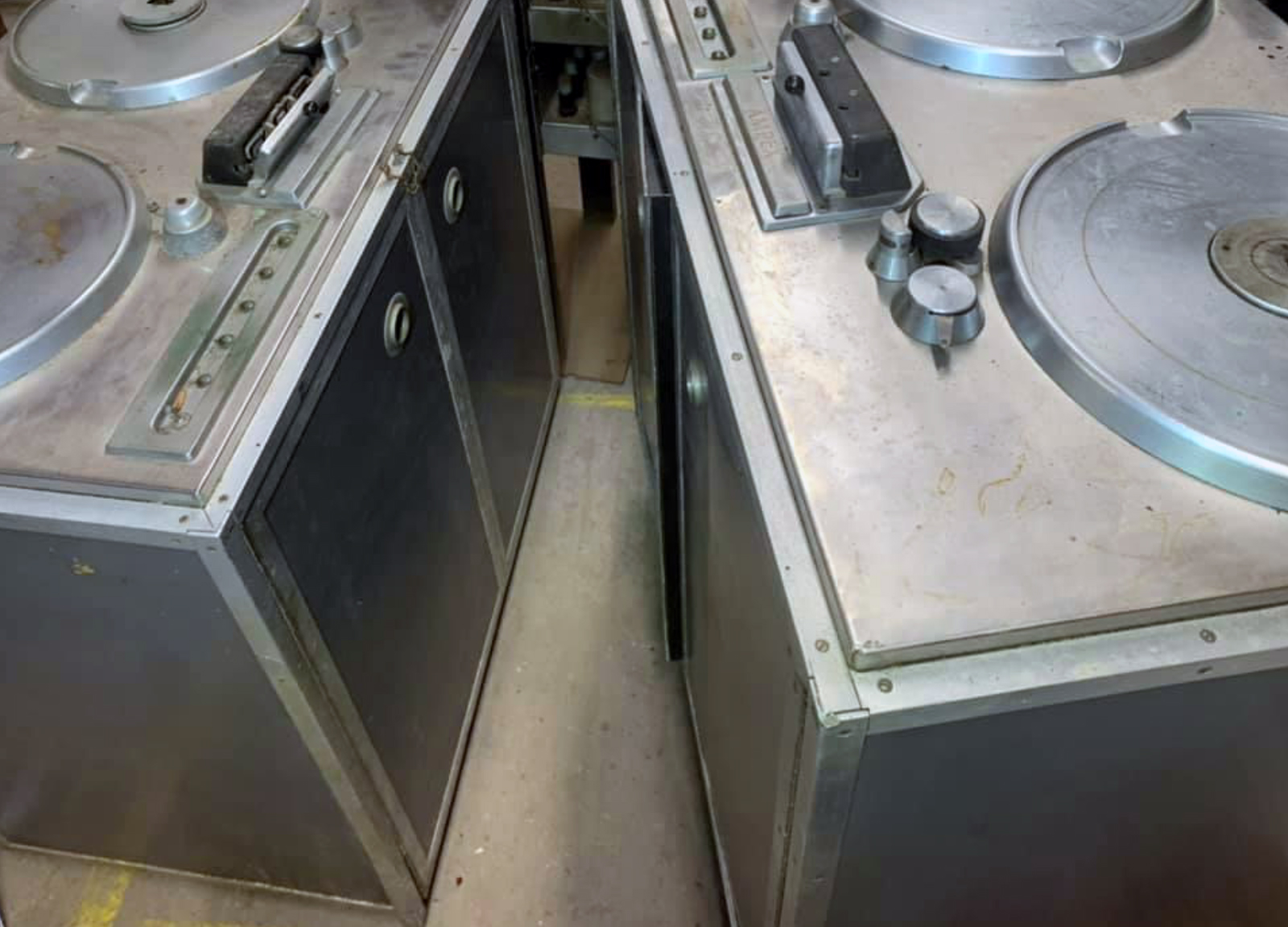 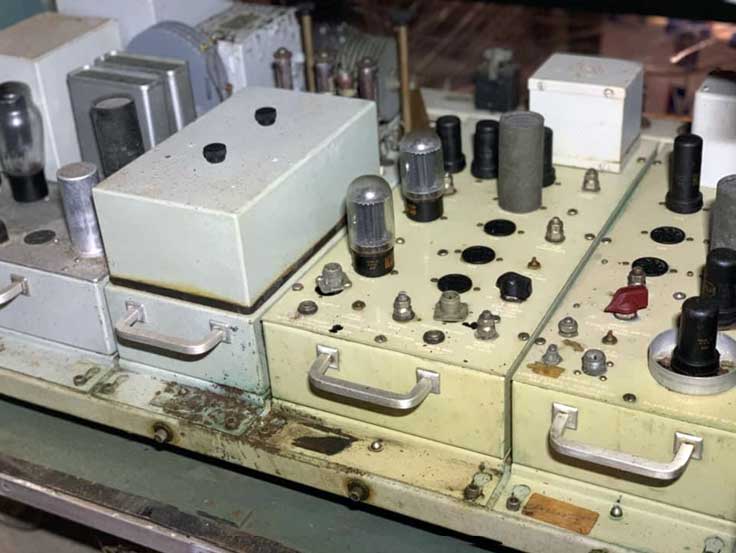  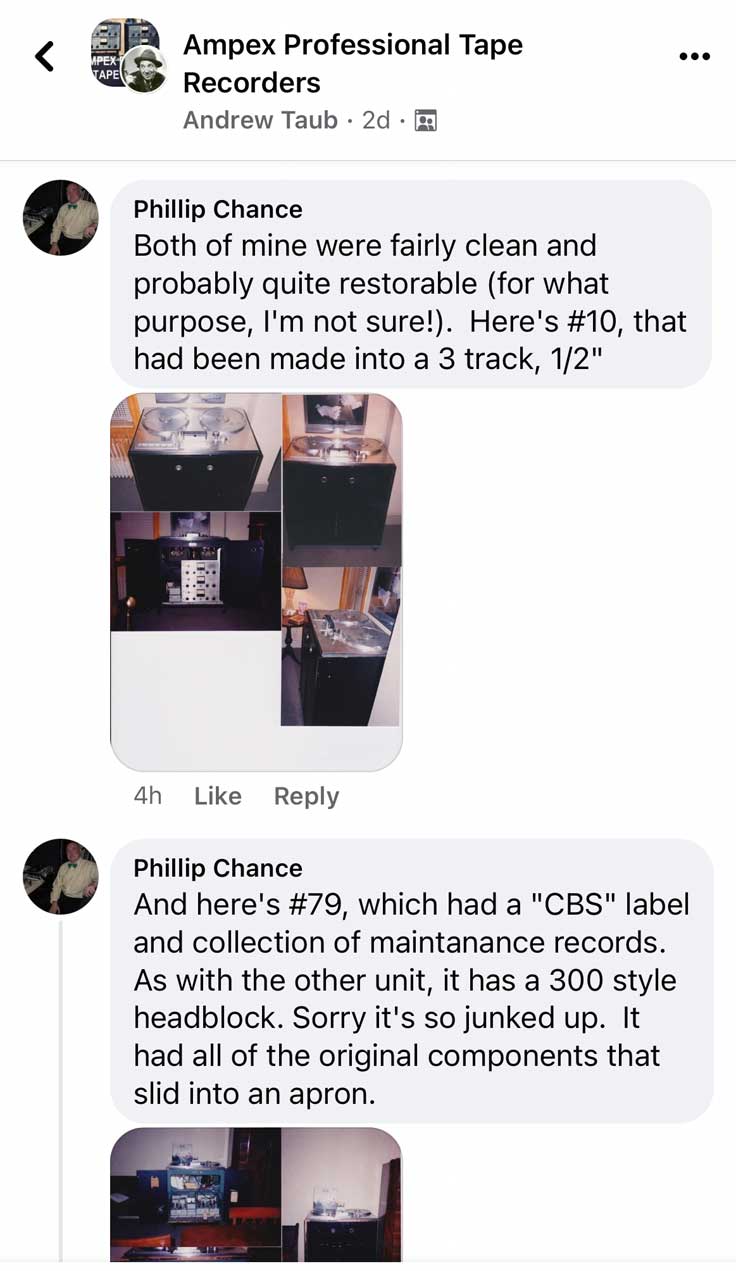 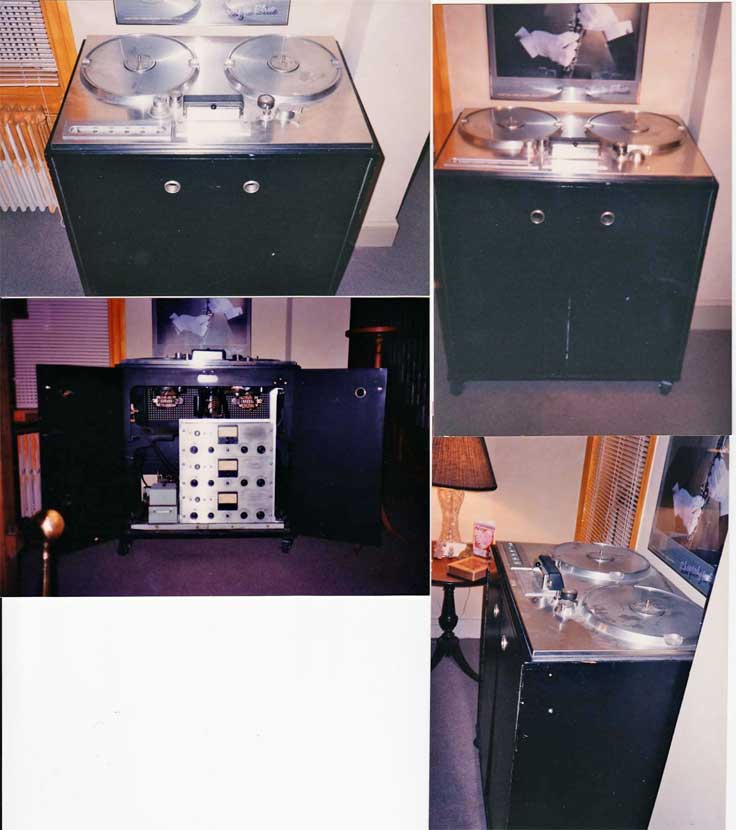 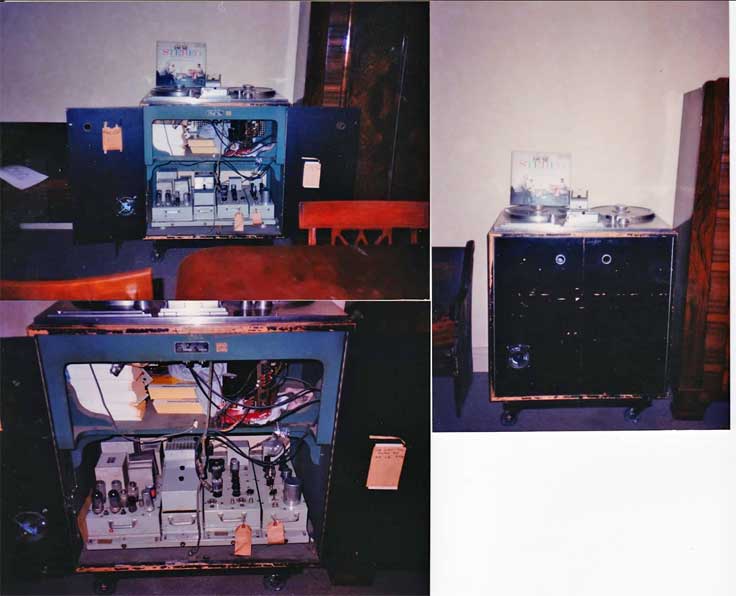
Go to the company's history
News coverage #1 News coverage #2 • view overview video of tape recorder collection • more info
Back to the Ampex main page
Please select a reel tape recorder company from the list below
|


